ARCHIVED - 2015 Annual Report to Parliament
This page has been archived on the Web
Information identified as archived is provided for reference, research or recordkeeping purposes. It is not subject to the Government of Canada Web Standards and has not been altered or updated since it was archived. Please contact us to request a format other than those available.
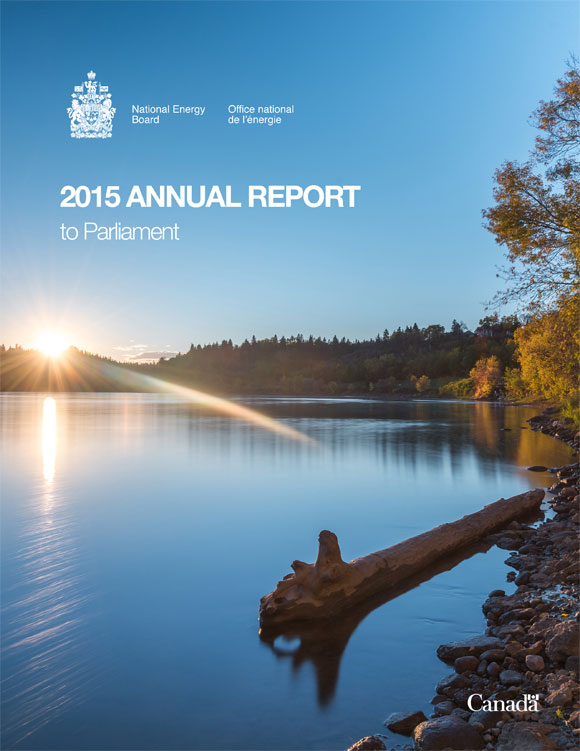

Chair’s Message
PETER WATSON, CHIEF EXECUTIVE OFFICER

I am pleased to present the National Energy Board (NEB or the Board) 2015 Annual Report to Parliament.
The past year has been a period of unprecedented change for the Board. We have laid the groundwork for an ambitious modernization that will enable the Board to provide what Canadians expect and deserve: a fair, transparent and respectful regulator that delivers timely, high-quality results.
During 2015, I travelled across Canada as part of the NEB’s National Engagement Initiative, attending 80 meetings in 34 cities and towns in nine provinces and two territories. What I learned had a profound impact on me and how I see the NEB doing its work in the future. Canadians told us clearly that they want to be a part of the energy dialogue, and want accessible and transparent information about safe energy regulation in our country.
The NEB responded with increased stakeholder engagement, both within and outside of the adjudication processes. We established two regional offices in Montréal and Vancouver, in addition to our offices in Yellowknife and Inuvik, to ramp up our community-based and regional focus. This has positioned the NEB to work on building stronger, renewed relationships with regional leaders, landowners, environmental groups and Indigenous Peoples. We will continue to adopt new and innovative approaches to provide more meaningful opportunities for public participation in NEB hearing processes, and to provide Canadians with appropriate avenues of engagement with the NEB outside of hearings.
We have also taken steps to be more transparent, and to help Canadians better understand what we do every day. In the past year, we have added to our online Safety Performance Portal with an online interactive Pipeline Incident Map that offers Canadians the opportunity to view all pipeline incidents since 2008. We have begun publishing pipeline company field inspection reports online. We continue to focus on data collection and analysis, both to learn from past incidents and reduce future incidents, and to make more information about company pipeline safety performance available to the public.
A key aspect of the NEB’s mandate is to study energy matters over which parliament has jurisdiction, and to provide the government with advice on those issues. With the growing volatility and uncertainty in our energy markets, the need has never been greater for Canadians and policy makers to get objective, fact-based information on Canada’s energy system. The NEB is responding by providing more open, forward-looking energy data and information, both online and through our energy markets publications.
Demonstrating regulatory leadership will improve public confidence in the NEB’s ability to fulfill its mandate, as well as facilitate stronger coordination and cooperation with our territorial, provincial, federal, and international counterparts.
Regulatory excellence is not a static achievement but a perpetual pursuit. It is dynamic by nature. The NEB actively anticipates and embraces all feedback - whether sourced from external audits, stakeholders or our own internal management systems – as a part of our goal to lead regulatory excellence. The organization’s responsibilities are informed by a wide array of factors, including emerging industry developments, the proactive consideration of safety, environmental, societal, and economic trends that shape the Canadian public interest. We are already a strong regulator, and we will continue to improve our work to respond to our changing environment.
Original signed by
Peter Watson, Chair and CEO

Who We Are
and What We Do
The National Energy Board is Canada’s energy and safety regulator. We do not simply make a decision on a project and then walk away. We oversee safety for the full lifecycle of energy facilities — from design and application assessment to construction, operation and abandonment. We work alongside communities and share the same goal of making energy infrastructure the very safest it can be.
The staff of the National Energy Board is made up of highly skilled employees, including engineers, environmental specialists, auditors, inspectors, engagement staff, legal and administrative specialists, and others. We are proud of the work we do protecting the interests of Canadians. Whether it’s managing public hearings, building a better website, recruiting talented new employees or walking pipelines conducting inspections - we know our work makes a difference in keeping Canadians safe, the environment protected and energy infrastructure reliable.
In order for the Board to effectively serve Canadians, we know they need to have confidence in the regulatory regime
and believe in the Board’s ability to enforce the orders, rules and regulations that are in place to protect Canadians, their communities and their environment.
Our work goes beyond approving projects and penalizing those who don’t follow our rules. We are here to serve the public. We want to make certain that Canadians know they have a regulator they can rely on, because the Canadian public interest is at the heart of everything we do.
In order to achieve our core mandate, the Board has outlined three strategic priorities where we will:
- develop and implement a framework for regulatory excellence
- continue to strategically develop, refine and communicate our actions on pipeline safety and environmental protection
- implement a strategic and enduring approach to engaging with Canadians
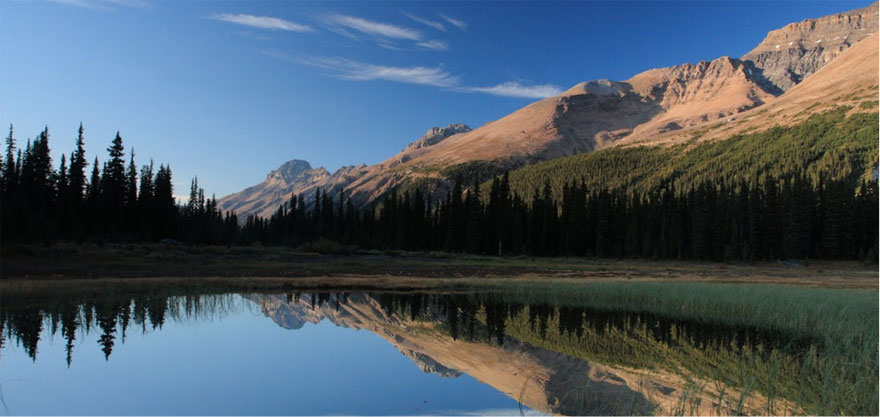
Major Pipeline Systems and Frontier Activities
Regulated by the National Energy Board
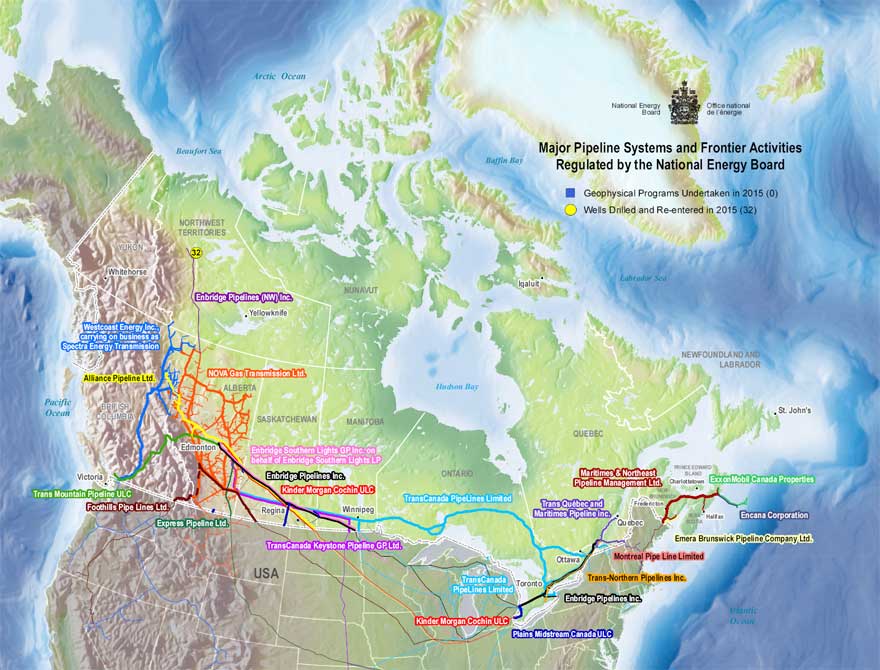
The Board
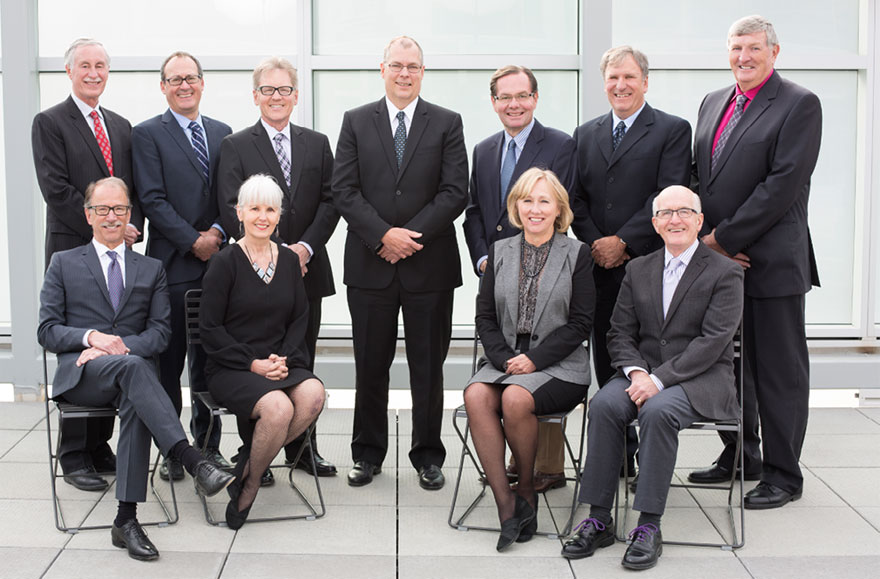
Back (left to right): Ron Wallace, Shane Parrish, Roland George, Peter Watson, Jacques Gauthier, Murray Lytle, James Ballem
Front (left to right): Phil Davies, Lyne Mercier, Alison Scott, David Hamilton
Absent: Steven Kelly, Keith Chaulk, Mike Richmond
Our Role and
Responsibilities
The National Energy Board is an independent federal regulator established in 1959. Our mandate is to promote safety and security, environmental protection and economic efficiency in the Canadian public interest, in the regulation of pipelines, energy development and trade. The Board reports to Parliament through the Minister of Natural Resources. In 2015, the NEB regulated approximately 73,000 kilometres (km) of interprovincial and international pipelines along with approximately 1,400 kilometres of international power lines across Canada. The pipelines,
owned by 100 companies, shipped approximately $99.7 billion worth of crude oil, petroleum products, natural gas liquids and natural gas to Canadians and export customers at an estimated transportation cost of $7.3 billion. Overall, 31 companies had ownership of NEB-regulated international power lines which transmitted approximately $3.4 billion of electricity into and out of Canada.
The main responsibilities of the NEB are established in the National Energy Board Act (NEB Act). More information on the background and operations of the NEB can be found on the Board’s website, www.neb-one.gc.ca.
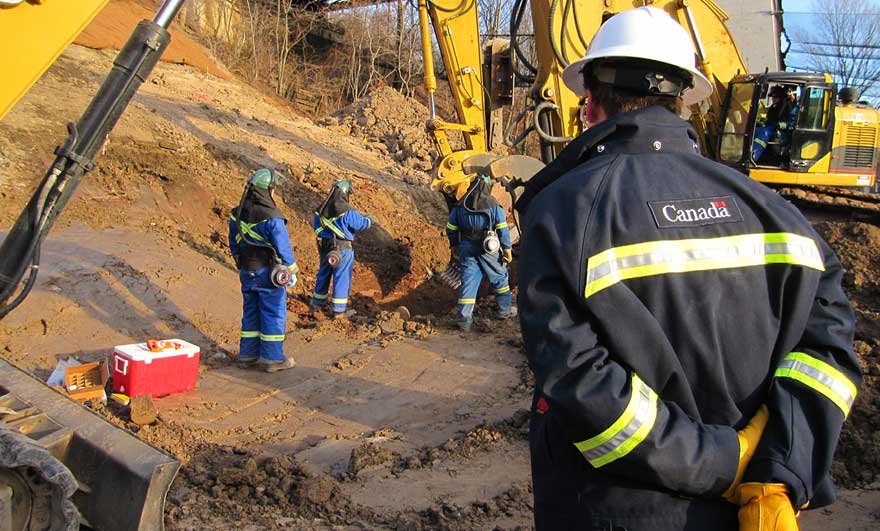
Lifecycle Regulation
The Board regulates Canada’s federal energy infrastructure over its complete lifecycle. During the design and applications assessment phase of projects, we review and impose conditions. When approved projects are being built and operated, we inspect and audit them. And, when a pipeline has reached the end of its usefulness, we review abandonment applications to ensure that it is abandoned in a safe and environmentally responsible manner.
In other words, the Board regulates from “start to finish”, and holds pipeline companies responsible for the full lifecycle of the pipelines they operate.
We require the companies we regulate to anticipate, prevent, manage, and mitigate any potentially dangerous conditions associated with their activities. Our Board Members and staff will not hesitate to use our full enforcement toolkit to achieve compliance with rules and regulations protecting Canadians and the environment.
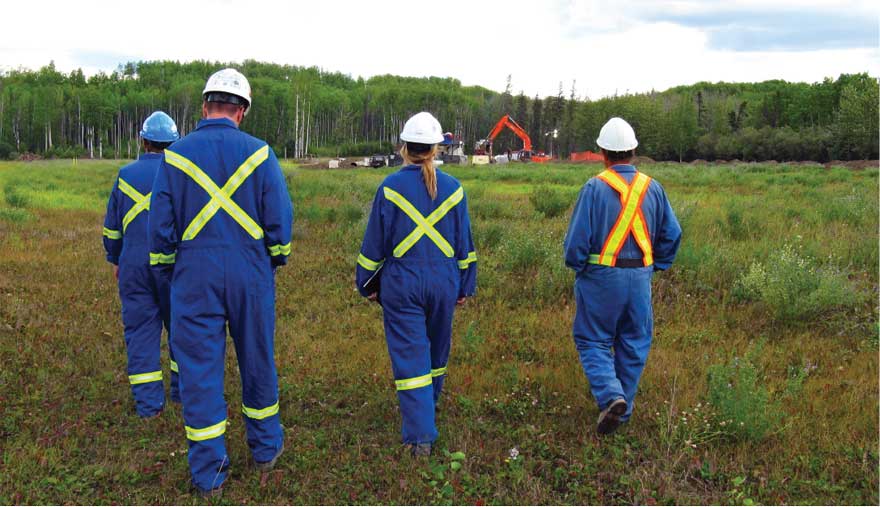

The NEB National
Engagement Initiative
In the first half of 2015, the National Energy Board conducted a National Engagement Initiative. Energy infrastructure, and the NEB’s role as the federal regulator, had been under growing scrutiny in the past several years, and the Board determined that in order to understand the issues facing the NEB, we had to reach out directly to the public. We asked Canadians to tell us what was most important to them about the work that we did, and how they felt we could adjust our pipeline safety program, public engagement activities and communications.
Accompanied by some technical staff and the Board Members who lived in each region, Chair Peter Watson met with as broad and varied a selection of people as possible to hear about their thoughts and concerns. Meetings were held with municipal and provincial leaders and staff, Indigenous chiefs and band councils, environmental groups, first responders and academics, as well as professional and industry organizations. Over a five-month period, the NEB attended 80 meetings, in 34 towns and cities across nine provinces and two territories.
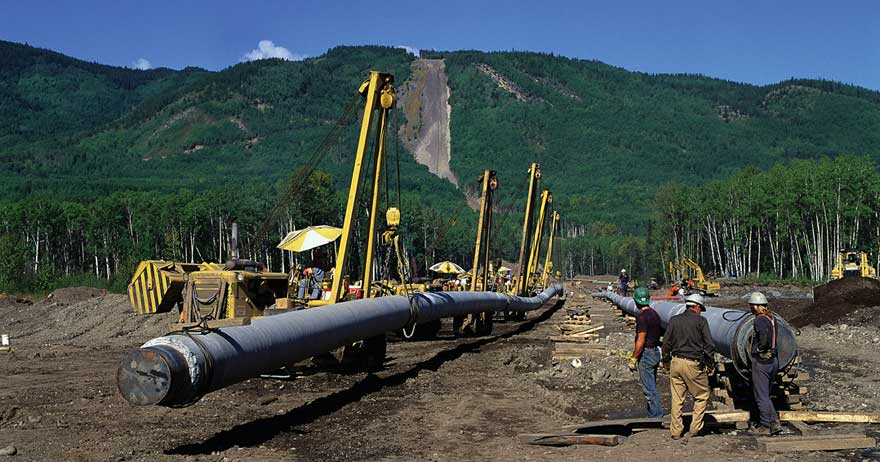
The National Engagement Initiative was new territory for the NEB, unprecedented in the history of the regulator. It signaled a change in tone for how we interacted with Canadians. Over the course of the meetings, common themes emerged:
- Without exception, every person’s first priority is the protection of their local and regional environment – especially water systems and land – from negative effects and risks of energy infrastructure.
- Stakeholders clearly said that they want a two-way conversation with the NEB and industry, where not only can they say what is on their mind, but also receive assurance that they are being heard and that their concerns are being acted on.
- Stakeholders also questioned whether regional emergency management systems would work properly when needed. They realized that this was a shared responsibility of municipal first responders, industry, other levels of government and emergency management agencies, but were not confident the system parts were fully aligned and working together.
The initiative put the NEB face-to-face with Canadians who expressed their concerns, and offered regional insight and perspectives related to pipelines and energy production. Ultimately, we learned that there was a need for the NEB to build greater public confidence through improved transparency. Canadians deserve to have more information regarding our role, company performance and what, if any, impacts they might experience due to energy infrastructure near them.
The NEB is not done with engaging Canadians. Rather, the Engagement Initiative was meant to be the beginning of a new and different kind of conversation with our stakeholders, and also serve as an impetus for action. Now that we have heard feedback on what Canadians want and need from the NEB, we are taking action to respond in a meaningful way. For a full report on the National Engagement Initiative and a summary of what we, as the federal energy regulator, will do about the feedback that Canadians have shared, please visit www.neb-one.gc.ca
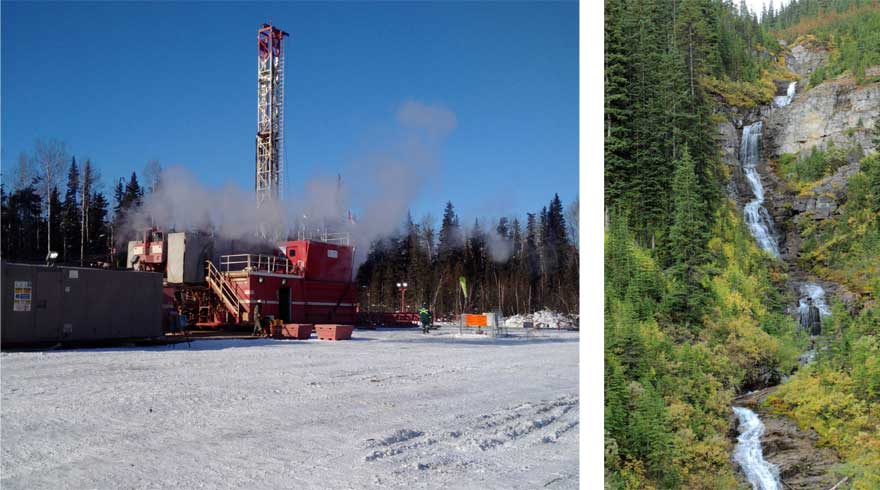
In the Public Interest
The NEB regulates pipelines, energy development and trade in the Canadian public interest. The public interest is inclusive of all Canadians and refers to a balance of economic, environmental and social considerations that changes as society’s values and preferences evolve over time.
A key component of this process is listening to what Canadians have to say about how energy infrastructure is developed and regulated, engaging them in meaningful dialogue about issues and solutions, and publicly sharing information about regulatory initiatives.
Application to Participate Process
Public participation is an important element of an open and effective regulatory process. Under the NEB Act, the Board must hear from those who are directly affected, and may hear from those with relevant information or expertise.
In developing its Application to Participate process, the Board listened to public feedback about the Application to Participate application form and the process in general. In 2015, we launched a Participation Portal (Portal) which allows accepted Intervenors to organize, submit, and view information related to their hearing participation online, in a centralized system. The Board also has Process Advisors available to assist applicants by phone or email for one-on-one support. Process advisors also offer online information sessions that provides an overview of the application to participate and hearing processes.
Participant Funding Program
The NEB administers a Participant Funding Program (PFP) that provides modest funding to facilitate the participation of individuals, Indigenous peoples (First Nations, the Métis and the Inuit), and non-industry not-for-profit organizations in hearings with respect to new or abandonment projects for pipelines or powerlines. PFP was established in 2010, and expanded in June 2015 to include Environmental Assessments of designated projects as per the Canadian Environmental Assessment Act, 2012 (CEAA 2012) Regulations Designating Physical Activities.
Since the PFP was introduced in 2010, the NEB has announced more than $11.5 million for participation in 19 eligible public hearings. To date, $5.57 million in funding was awarded to 171 recipients which represents 13 of the hearings. Among those who had applied, approximately 80 per cent of the funding was awarded to Indigenous groups.
A five year evaluation was undertaken between November 2014 and September 2015 to examine the program’s relevance, effectiveness, efficiency and economy for the period of June 2010 to June 2015 during which the initial Terms and Conditions (2010) of the PFP were applicable. The evaluation found the program is aligned with the roles, responsibilities and priorities of the federal government as well as the mandate and priorities of the Board. There is a continuing need for PFP to support the meaningful participation of indigenous groups and other stakeholders in the Board’s processes.
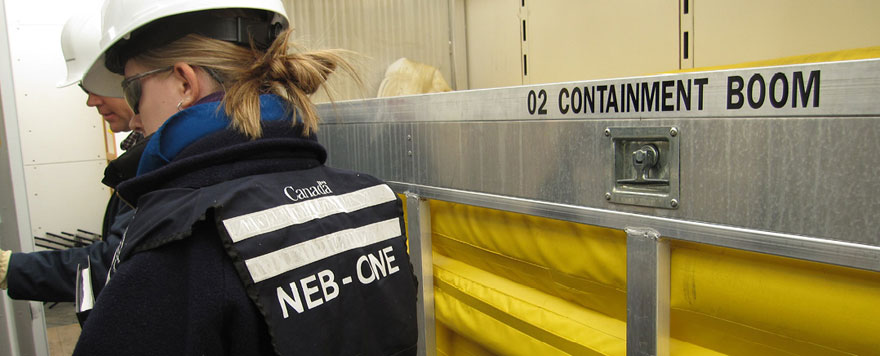
Participation of Indigenous
Groups in the Regulatory Process
Participation of Indigenous Groups in the Regulatory Process We are committed to reaching out to Indigenous people and communities early in the hearing process, where there is a potential impact on the rights and interests of these groups from NEB-regulated projects. The Board’s Enhanced Aboriginal Engagement (EAE) program provides proactive contact with Indigenous groups that may be affected by a proposed project, and to assist them in participating in the NEB’s regulatory process.
In 2015, under the EAE initiative, we contacted 210 Indigenous communities and organizations, and held 32 meetings with them, many in their own communities. These meetings provide an opportunity for Indigenous representatives to have their questions about NEB processes answered. We also have Process Advisors who, as part of their role, support Indigenous groups who are participating in public hearings.
The Board is committed to hearing from Indigenous groups in a way that respects their values and traditions. In an effort to make public hearings more accessible, the NEB adapts its processes to assist Indigenous intervenors so they may effectively participate.
The Board continues to integrate ceremonies and traditional practices into our hearing processes at the request of Indigenous participants. Since Indigenous groups maintain an oral tradition, this year during the TransMountain Expansion, NGTL 2017 System Expansion, Enbridge Line 3 and Energy East Project hearings we provided Elders and other community members with the opportunity to give their evidence orally at the hearing as well as in writing.
For all facility projects regulated by the Board, including those that do not require a public hearing, the Board continues to require companies to contact potentially impacted Indigenous groups early in their project planning, to explain the project, and consider and address any concerns they may have in the project design.
Aboriginal Awareness Project
During 2015, Aboriginal engagement practitioners, socio-economic specialists and interested individuals across the NEB initiated new ways of sharing information, best practices and learnings around Aboriginal Engagement and cultural awareness.
The NEB has established an Aboriginal Awareness Research Area that is accessible to all staff, providing a physical resource space where staff can research and learn more about Aboriginal cultures and history as well as treaties, traditional territories, litigation and consultation procedures. The space features a display of Aboriginal artifacts, books, maps, and art contributed by staff members.
A number of events – from a celebratory kick-off of Aboriginal Awareness Week, to workshops on Indigenous culture and artifacts, to viewings of documentary and guided museum tours – took place over the year.
In addition, a new Community of Practice (CoP) called the Indigenous Diversity CoP was formed to enhance the delivery of effective Indigenous engagement and expertise to the NEB. The CoP will sponsor regular learning and sharing meetings every two months, which will include workshops, cultural highlights, external speakers, and internal NEB staff knowledge-sharing.

Environmental Assessments
The National Energy Board’s primary goal is that pipelines and pipeline facilities are built and operated in a way that is safe and protects the surrounding environment. The NEB has decades of experience in considering potential environmental effects when making its regulatory decisions. We have been conducting environmental assessments under the Canadian Environmental Assessment Act since it first came into force in 1995, and considering environmental impacts of projects under the NEB Act before and after that date.
One of the first steps the Board takes in considering a project proposal is to do an environmental assessment (EA), which is completed before the NEB makes a decision or recommendation on whether or not to approve a project in the public interest. EA is a tool in the project review process that identifies, assesses and, to the extent possible, mitigates the environmental effects of a project. Our EAs examine:
- physical and meteorological environment
- soil, soil productivity, and vegetation
- wetlands, water quality, and quantity
- fish, wildlife, and their habitat
- species at risk or species of special status and related habitat
- heritage resources
- traditional land and resource use, and human health, aesthetics, and noise
The Board commonly imposes additional conditions on projects to make environmental protection measures more robust before, during and after construction – above and beyond the measures required by regulations or proposed in project applications.
Through conditions, the Board typically requires companies to create and follow a detailed Environmental Protection Plan (EPP) that describes all of the sensitive environmental features identified during the EA, and outlines mitigation measures and contingency plans for protecting the environment through construction. The Board also typically requires companies to carry out extended environmental monitoring following construction, and provide reports on this monitoring.
In some cases, where there are particularly sensitive environmental attributes identified in an EA, the Board may impose conditions that provide a higher level of environmental protection. An example of this is pipeline projects being built through caribou critical habitat. Companies are required to carry out habitat restoration, and to implement offset measures to address residual effects to caribou habitat. We also require companies to enhance monitoring, over a longer period, to make sure that these restoration and offset measures are effective. NEB Environmental Specialists verify compliance with these caribou-related conditions by assessing the Board required restoration and offsets plans, and inspecting the implementation of these plans.
The EA process also includes a strong emphasis on watercourses where fish and fish habitat could be impacted by a new or existing facility. The NEB ensures that fish and fish habitat protection measures are implemented at all watercourse crossings, as part of the NEB’s overall environmental protection mandate. In December 2013, the NEB signed a memorandum of understanding (MOU) with the Department of Fisheries and Oceans Canada (DFO) to improve the efficiency and effectiveness of regulatory review processes for energy facilities. In 2015, as part of the EA process, the NEB continued to require state of the art mitigation strategies for the protection of fish and fish habitat by pipeline and power line projects under its jurisdiction, and worked closely and collaboratively with DFO so fish and fish habitat are protected throughout the lifecycle of an NEB-regulated facility.

CEAA 2012 Report on Activities
For projects located on federal landsFootnote 1, section 67 of the Canadian Environmental Assessment Act 2012 (CEAA 2012) requires that before federal authorities make any decision that would allow a project to proceed, they must determine whether a project is likely to cause significant adverse environmental effects. Under section 71 of CEAA 2012, the NEB is required, at the end of each fiscal year, to report to both Houses of Parliament on its activities under sections 67, 68 and 69 of CEAA 2012 during the previous fiscal year.
During the 2014–2015 fiscal year, the NEB completed environmental assessments for two projects that are located on or that cross federal lands. In each case, the NEB determined that carrying out the project would not likely cause any significant adverse environmental effects and approved the project.
Land Matters Group
The Land Matters Group (LMG) is a multi-stakeholder advisory group consisting of members of the public, regulatory, industry and landowner groups who have a vested interest in land matters and who are impacted by the activities of companies that are subject to NEB regulation.
The LMG is currently composed of approximately 70 individuals and organizational representatives from across Canada. The group is led by a Steering Committee, who meet in Calgary three to four times each year, composed of:
- (BC) Farmers Advocacy Office
- Union des producteurs agricoles du
- Québec (UPA)
- Canadian Federation of Agriculture
- Canadian Energy Pipeline Association
- Alberta Energy Regulator
The LMG brings together the knowledge and expertise of these diverse groups to facilitate in-depth discussion on land matters and to inform regulatory development, as a part of the Board’s strategic priority of Engaging Canadians.
As one of its initiatives this year, the LMG initiated work for a sub-committee to help shape information and additional guidance for landowners related to easement agreements and the Board’s oversight of land access and acquisition processes. Members of the Steering Committee were invited to participate in a panel session related to right-of-way issues at the Board’s Safety Forum in June 2015, which was heavily attended. The group continues to be involved in the shaping and oversight of research related to the physical issues of abandonment, and keenly interested in timely consultation related to regulatory change initiatives, including proposed Damage Prevention Regulations, among others.
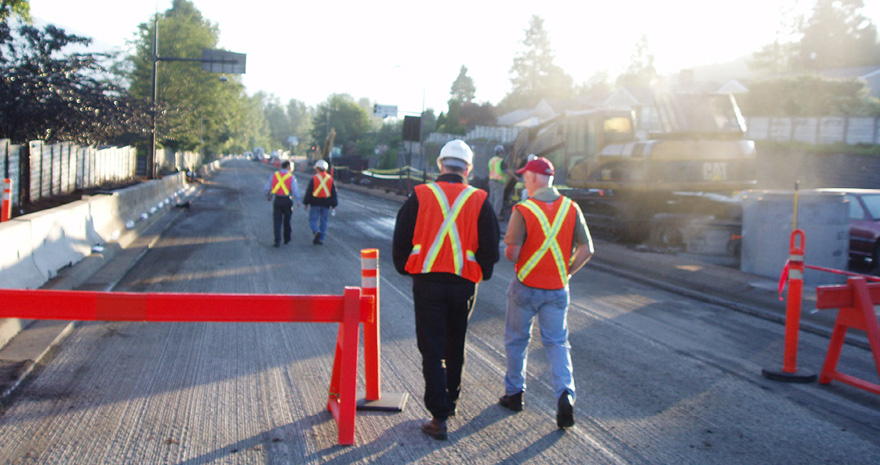
Energy Infrastructure –
Today and Tomorrow
Canadians depend on the pipeline transportation system for safe, reliable and efficient energy supply, now and in the future. The ability of this system to deliver natural gas, natural gas liquids (NGLs), crude oil, and petroleum products is also critical to Canada’s economy. The NEB is active and effective in Canada’s pursuit of a sustainable energy future by integrating relevant economic, environmental and social considerations when choosing a course of action.
Our requirements encourage innovation where possible but also specify mandatory design, operational practices or management methods when necessary. The regulatory framework supports a sustainable energy system that will meet Canadians’ needs today, while taking into consideration the needs of Canadians tomorrow.
Applications in 2015
Companies regulated by the NEB are required to seek the Board’s approval to, among other things:
- construct and operate international and interprovincial pipelines and international power lines in Canada, along with related facilities and activities, or modify or abandon existing facilities
- export crude oil, natural gas liquids and electricity, and export and import natural gas; and
- establish pipeline tolls and tariffs
| Number of Applications Received 2014 and 2015 | ||
|---|---|---|
| 2014 | 2015 | |
| Section 52 certificates | 4 | 2 |
| Section 58 orders | 44 | 52 |
| Part VI Import/Export | 511 | 526 |
| Traffic, Tolls and Tariffs | 15 | 22 |
| Abandonment | 3 | 1 |
Decisions and Recommendations Issued in 2015 Include the Following:
Facilities
Wolverine River Lateral Loop (Carmon Creek Section) Project
On 5 March 2015, the Board recommended that Governor in Council (GiC) approve the issuance of a Certificate of Public Convenience and Necessity (Certificate) to NGTL for the construction and operation of the proposed Wolverine River Lateral Loop (Carmon Creek Section) Project (the Project), subject to 16 conditions. The Project includes the construction and operation of a 61 km sweet natural gas pipeline, as well as tie-in connections to existing facilities, valve sites, launcher and receiver facilities for inline inspection, and cathodic protection. The project is located near Peace River, Alberta. Please see the NEB’s website to read the complete recommendation and decision (GH-003-2014).
North Montney Mainline Project
On 15 April 2015, the majority of the Board recommended that Governor in Council (GiC) approve the issuance of a Certificate of Public Convenience and Necessity (Certificate) to NGTL for the construction and operation of a proposed extension of the NGTL System to the North Montney area in northeastern British Columbia. The extension includes a 301 km sweet natural gas pipeline, three compressor stations, sixteen meter stations and associated facilities and is subject to 45 conditions. Please see the NEB’s website to read the complete recommendation and decision (GH-001-2014).
King’s North Connection Pipeline Project
On 2 June 2015, the Board issued a letter decision and Order, which approved the King’s North Connection Pipeline Project (Project), subject to 14 conditions. The Reasons for the Decision were released on 30 July 2015. The Project includes construction and operation of approximately 11 km of pipeline, two tie-in valves and associated facilities. The Project is located in the Greater Toronto Area of southern Ontario. Please see the NEB’s website to read the complete recommendation and decision (GHW-001-2014).
Abandonment of the Alaska Pipeline
On 30 March 2015, the Board granted Ruger Energy Inc. leave to abandon in-place the approximately 580-metre Alsask Pipeline, and to excavate and remove a riser (Pipeline), subject to 14 conditions. The Pipeline is located on crown land and crosses the Alberta/Saskatchewan border. Please see the NEB’s website to read the complete decision (MHW-002-2014).
Abandonment of the Pouce Coupe A Pipeline
On 29 May 2015, the Board granted AltaGas Holdings Inc. leave to abandon in-place the approximately three-km Pouce Coupe A Pipeline, (Pipeline), subject to six conditions. The Pipeline is located on private land and crosses the British Columbia/Alberta border. Please see the NEB’s website to read the complete decision (MHW-003-2015).
Tolls and Tariffs
Application for Approval of New Services and Related Tolls and Tariffs
On 9 July 2015, the Board granted Alliance Pipeline Ltd. approval to implement new services and related tolls and Tariff on the Alliance Pipeline, commencing 1 December 2015. The approval included the proposed toll methodology and firm tolls, new services and associated terms and conditions, recoverable cost variances and abandonment surcharge and a requirement for a reserve account. Please see the NEB’s website to read the complete decision (RH-002-2014).
Trans Mountain Revised Nominations/Capacity Allocation
On 8 January 2015, the Board approved certain tariff amendments for Trans Mountain in order to reduce apportionment levels on the Trans Mountain Pipeline. These amendments incorporated verification procedures and verification limits in Trans Mountain’s nomination process. The Board considered it important that the nomination process be reflective of each shipper’s capability and intent to supply petroleum to, and remove petroleum from, the pipeline. Please see the NEB’s website to read the complete decision (RHW-001-2013).
Part VI - Imports and Exports
Under Part VI, applications to import and/or export come in two forms: short-term orders and long-term licences.
In 2015, the Board received seven long-term licence applications, down from the 20 applications received in 2014. There was a significant increase in the number of Part VI long-term (import and export) licence applications that were approved by the Board, from four Board Decisions rendered in 2014 to 22 in 2015.
Appendix F contains details of Part VI long-term (import and export) licence applications approved by the Board this year.
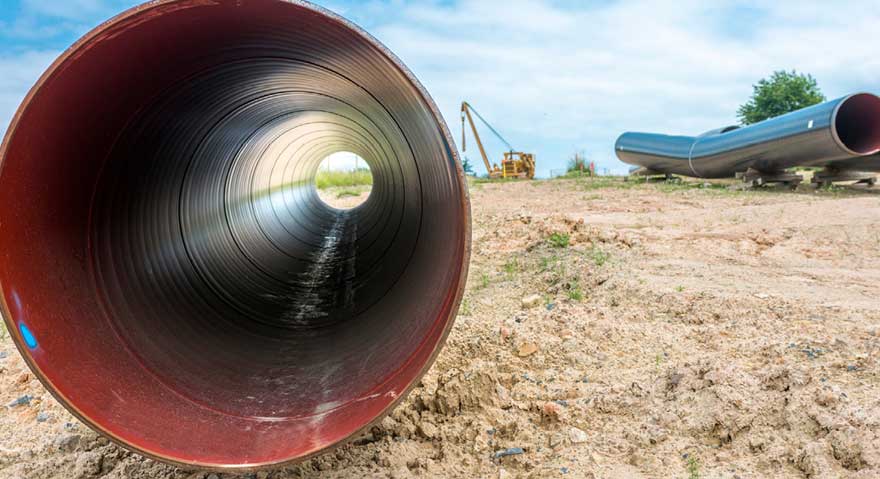
Service Standards and Results in 2015
Service standards are an essential tool in today’s resultsbased management environment. The NEB has its own internal service standards for many regulatory functions and services.
The Board communicates to the public and stakeholders the expected period in which an application or request will be processed, having due regard to the assessment it
must carry out to fulfill the NEB’s mandate as stipulated in the legislation.
The following tables 1, 2 and 3 list the overall NEB service standards and results, as well as the standards and results for electricity export applications and section 58 applications in 2015.
Table 1 - NEB Service Standards and Results in 2015
| Task | Service Standard | No. of Applications or Requests |
Results |
|---|---|---|---|
| Release of Hearing Decisions and Recommendations | 80% of Reasons for Decision or Recommendations completed within 12 weeks following a public hearing. | 7 | 86% |
| Onshore Pipeline Regulation and Processing Plant Regulation Audits: draft audit report | 80% of draft audit reports will be sent to the audited company within 12 weeks of field work completion | 6 | 100% |
| Onshore Pipeline Regulation and Processing Plant Regulation Audits: final audit report | 80% of the final audit reports will be sent to the audited company within 12 weeks of receiving the audited company’s comments on the draft report | 6 | 100% |
| COGO Act Applications to drill a well | Decision rendered within 21 calendar days of the receipt of a complete application | 0 | n/a |
| COGO Act Applications to alter the condition of a well | Decision rendered within 21 calendar days of the receipt of a complete application | 38 | 100% |
| COGO Act Geological and Geophysical Applications | Decision rendered within 30 calendar days of the receipt of a complete application | 1 | 100% |
| Authorization for export of crude oil and/or petroleum products | Two working days (short-term orders only) | 22 | 100% |
| Authorization for export and import of natural gas | Two working days (short-term orders only) | 186 | 100% |
| Authorization for export of NGLs | Two working days (short-term orders only) | 20 | 100% |
| CPR Act Applications Significant Discovery Applications on frontier lands |
80% of decisions made within 90 calendar days from the day that all information is available to begin the evaluation process | 0 | n/a |
| CPR Act Applications Commercial Discovery Applications on frontier lands |
80% of decisions made within 90 calendar days from the day that all information is available to begin the evaluation process | 0 | n/a |
| Landowner Complaint Process | 100% of requests responded to within 10 calendar days | 12 | 100% |
| Financial Audits | 80% of draft audit reports will be sent to the company within eight weeks of field work completion | 4 | 100% |
| 80% of final financial audit reports will be sent to company within three weeks of receiving the audited company’s comments on the draft report | 4 | 100% |
Table 2 - Service Standards and Results for Electricity Export Applications in 2015
| Category | Category Description | Service Standard | No. of Applications |
Results |
|---|---|---|---|---|
| A | Minor complexity of issues | 80% of decisions released within 40 calendar days following the completion of the Notice of Application period | 10 | 100% |
| B | Moderate complexity of issues | 80% of decisions released within 90 calendar days following the completion of the Notice of Application period | 0 | n/a |
Table 3 - Service Standards and Results for Section 58 Applications in 2015
| Category | Category Description | Service Standard | No. of Applications | Results |
|---|---|---|---|---|
| A | Minor complexity of issues with no third party interest | 80% completed within 40 calendar days of the receipt of a complete application | 5 | 80% |
| B | Moderate complexity of issues with possible third party interest | 80% completed within 90 calendar days of the receipt of a complete application | 35 | 100% |
| C | Major complexity of issues with likely third party interest | 80% completed within 120 calendar days of the receipt of a complete application | 8 | 100% |
NEB in the North
NEB Engagement 2015
In 2015, the Board continued its northern engagement activities through regular interaction with Indigenous and government leadership and communities, as well as with regulatory, environmental assessment, and wildlife and renewable resource management agencies. Over 30 such meetings have taken place, several including the NEB’s Chair and CEO as an integral component of the Chair’s National Engagement Initiative, and our on-going commitment to listening to the voices of Northerners.
Engagement initiatives also involved the Board’s continuing participation in a number of working groups, committees, and conferences. These have included the NWT Board Forum, the Arctic Forum, the Nunavut Oil and Gas Summit, the NWT Geoscience Forum, the Arctic Council, the Beaufort Regional Environmental Assessment, and emergency preparedness exercises.
NEB representatives met with northern agencies regarding regulatory changes, project updates and roles post-NWT devolution. The January 2015 meeting included the Northern Projects Management Office (NPMO), NRCan, MVIRB and AANDC. The February 2015 Coordination on Northern initiatives meeting included Environment Canada, GNWT, MVIRB, water boards, and NPMO. The NEB Northern Regional Offices meet regularly with the Northwest Territories Office of the Regulator of Oil and Gas Operations (OROGO) to maximize cooperation and information exchange in the exercise of NEB and OROGO regulatory responsibilities.
The NEB continues to participate in the Arctic Regulators Forum, where regulators share lessons learned and best practices, and discuss regulatory issues. Our most recent involvement was at the 26–27 October 2015 conference in Tromsø, Norway.
Regulatory Developments
In 2015, the NEB worked on changes required to implement the Energy Safety and Security Act (ESSA), which received Royal Assent on 26 February 2015. The NEB will be prepared for open and transparent processes when ESSA comes into force on 26 February 2016. For example, the NEB will be able to conduct a public hearing in relation to its duties under COGOA, and to manage a participant funding program for environmental assessments where CEAA 2012 applies.
Arctic Offshore Drilling
The NEB received notification from Imperial Oil Resources Ventures Limited (IORVL) on 26 June 2015, stating that it has deferred its proposed Beaufort Sea Joint Venture Exploration Drilling Program. IORVL indicated that they will ask the federal government to have their exploration licenses retroactively extended to 16 years. Imperial stated that this extension would provide time to do the necessary technical work and complete the regulatory process. The NEB has suspended all work on IORVL potential application and is awaiting notice from IORVL to initiate any further action.
Northern Preparedness, Emergency Management and Security
The NEB has participated, planned or played a role in a number of multi-agency and multi-jurisdictional exercises such as Arctic Council Emergency Prevention Preparedness and Response (EPPR) Working Group Marine Oil Spill Preparedness Agreement (MOSPA) exercise, the Canadian Coast Guard and Environment Canada led Science Table exercise for Canadian Forces OP NANOOK 2015 and the bi-annual U.S. and Canadian Coast Guards CANUSNorth exercise.
The NEB chaired the Beaufort Regional Environmental Assessment (BREA) Emergency Preparedness and Response Working Group that contracted the development of a week-long oil spill response training course that was delivered to Ulukhaktok, NT community members in July 2015.
The NEB actively participates in several working groups related to emergency management and security, such as the NWT-Nunavut Spills Working Group, the Arctic Preparedness Working Group, and the Arctic Security Working Group.
Mackenzie Gas Project (MGP)
On 20 August 2015, the NEB received an application from Imperial Oil Resources Ventures Limited requesting
an extension, for a period of seven years, of the sunset clauses in its approvals for the MGP. As the regulation for part of the MGP was devolved to the Government of the Northwest Territories, the NEB is coordinating the review of the requested extensions with the Regulator of Oil and Gas OROGO. The NEB and OROGO have initiated a joint consultation process asking parties to provide written comments with respect to the proposed extensions by 16 February 2016.
Geophysical, Drilling and Production Applications
The NEB granted one geophysical operations authorization, and 38 well approvals.

Promoting Safety, Security
and Environmental Protection
in Energy Infrastructure
The safety of Canadians and protection of the environment in the construction, operation and abandonment of pipeline facilities regulated by the NEB are the Board’s top priorities, and have been a part of our mandate since 1959.
We are Canada’s energy regulator and safety is our top priority. Our safety programs are designed to make sure companies are effective in managing safety and environmental protection throughout the entire lifecycle of a pipeline - from design to construction, operation and through to abandonment.
We maintain a proactive approach to incident prevention and we take all available actions to protect the environment and the public. In order to deliver on our mandate, we have regulations in place that set clear expectations for industry. We evaluate project proposals, monitor compliance and enforce rules.
Holding Companies Accountable
The NEB’s expectations of regulated companies are set out in the acts and regulations relevant to the Boards mandate, as well as through Board directions and orders. Companies must fulfil any commitments they make in their submissions to the Board, throughout all phases of regulatory oversight.
On a continual basis, companies are required to anticipate, manage, and mitigate any potential threats to safety and the environment that may occur through the full lifecycle of their facilities. The Board expects companies to achieve this through a combination of performance-based management practices, prescriptive standards and project-specific conditions.
All aspects of a company’s operation are governed by legal requirements, from design through to abandonment. The NEB holds its regulated companies accountable against these expectations using a rigorous compliance verification and enforcement program, and through enforcement actions.
Compliance Verification Activities (CVA)
The Board uses CVAs to observe and gather information about the state of compliance in a specific area of a company’s operations, or to investigate whether companies are taking the appropriate preventive or corrective actions. The Board’s suite of CVAs includes:
- inspections (of facilities under construction or in operation)
- emergency exercise evaluations
- emergency procedures manuals reviews
- formal compliance meetings (to check the progress of programs or corrective actions)
- management system audits
- reviews of post-construction monitoring reports
CVAs are designed to determine if legislation and expectations are being followed, to assess if enforcement is required, and to provide feedback to a company. During a CVA, Inspection Officers observe the compliance status of regulated companies. Where a noncompliance is noted, follow-up is undertaken to verify corrective actions have been put in place and to determine appropriate enforcement actions.
As a key element of proactive incident prevention, the NEB compiles information on the company’s performance for the purposes of establishing trends, and for assessing the amount of oversight required in the future. The results of compliance verification activities are used along with other inputs, such as incident data, to inform the NEB’s compliance plan for the coming year.
In 2015, the NEB conducted a total of 348 compliance activities related to security, public safety and environmental protection.
Enforcement Actions
Where non-compliances are observed through CVAs, the NEB uses enforcement actions to achieve company compliance as quickly and as effectively as possible. This reduces hazards and protects the safety of workers, the public, the environment and property. The NEB’s guiding enforcement policy states:
- NEB enforcement tools are not mutually exclusive and more than one measure may be employed to obtain compliance, deter future non-compliance or to prevent incidents/ accidents. When safety, security or environmental protection issues are identified, the NEB will use the most appropriate and efficient enforcement tool.
The Board took the following enforcement actions in 2015:
- 143 Notices of Non-Compliance (NNC) and Assurances of Voluntary Compliance (Canada Labour Code-related issues)
- 4 Inspection Officer Orders (IOO)
- 8 Safety Orders (3 original and 5 amended)
- 12 Administrative Monetary Penalties (AMPs)
The Board publishes compliance and enforcement documents online at www.neb-one.gc.ca
Environmental Compliance
Once a project is approved and construction is underway, the NEB holds companies accountable for meeting all environmental protection conditions. The NEB provides general oversight of company environmental performance and compliance with legislative requirements through various compliance verification activities. This includes reviewing the environmental reports that companies are required by Board conditions to submit, conducting construction inspections to ensure compliance with the company’s EPP and any Board conditions, and conducting operations inspections throughout the lifecycle of the project.
In 2015, NEB staff conducted over 100 CVAs specifically directed at ensuring that the environment is being protected, including 41 environmental construction and operations inspections, 30 environmental report reviews, and 36 compliance meetings with companies.
NEB environmental staff inspected pipeline construction activities, right-of-way reclamation activities following construction, trenched and trenchless watercourse crossings, construction and operation of compressor stations and pipeline maintenance activities through 2015.
| Compliance Activity | 2015 Completed ActivitiesFootnote 2 |
|---|---|
| Inspections | 142 |
| Emergency Exercises | 20 |
| Emergency Procedures Manual Review | 13 |
| Compliance Meetings | 137 |
| Audits | 6 |
| Report Reviews | 30 |
Whistleblower Policies
Where non-compliances have been noted through CVAs, enforcement actions are used to achieve compliance as quickly and as effectively as possible. Achieving compliance reduces hazards and protects the safety of workers, the public, the environment and property. The NEB’s guiding enforcement policy states:
Among the Board’s top priorities is its obligation to protect the safety of workers, the public, and the environment. Fostering an environment of regulatory compliance in the workplace is in the best business interests of regulated companies and the Canadian public. The NEB expects its regulated companies to establish and communicate “a policy for the internal reporting of hazards, potential hazards, incidents and near-misses that includes the conditions under which a person who makes a report will be granted immunity from disciplinary action.”
In such cases where the internal reporting of a concern does not result in a remedy of the situation, the Board supports employees and others who want to make disclosures to the NEB of alleged wrongdoings by regulated companies. Since the establishment of a Whistleblower Contact Line in 2012, the NEB has received 21 disclosures, with 8 disclosures occurring over the 2015-16 fiscal year. It should be noted that a single disclosure can include multiple allegations of non-compliance.The NEB follows up on all allegations, using formal investigations, inspections, additional audit activities, and/or company meetings.
A number of administrative monetary penalties relating to environmental protection were issued in the past year; more detailed information can be found in the Enforcement section of this Report, and on the NEB website.
We will continue to reach out to Canadians and meet with landowners, municipal representatives and Indigenous communities, to share information about the environmental compliance program and the various ways that Inspection Officers verify compliance.
Incident Management
Incidents are a reporting requirement under the NEB’s regulations. The Board’s regulated companies are accountable for anticipating, preventing, mitigating and managing all incidents. A company must immediately notify the NEB of any reportable incident that relates to the construction, operation or pending abandonment of its pipeline. The Board considers any incident unacceptable, and follows up on all reportable incidents.
As of January 1, 2015 companies were required to follow the NEB Event Reporting Guidelines and report all incidents to the NEB’s online Event Reporting System (ERS). The guidelines are intended to increase clarity on the definition of incident
for the various regulations the NEB uses. The NEB expects companies to use a precautionary approach to event and incident reporting which can be summarized as “when in doubt, report it”.
When the NEB is notified of an incident, its top priority is safety and security of people, and protection of property and the environment. In the event of a significant incidentFootnote 3, the Board has a comprehensive Emergency Management Program, which can include mobilization of a field response and activation of our Calgary based Emergency Operations Center.
Our overall role as the lead regulatory agency is to monitor company compliance as well as to assess the adequacy of the company’s emergency response (if required) and their subsequent investigation into the incident.
In 2015, NEB staff conducted
over 100 CVAs specifically
directed at ensuring that the
environment is being protected.
2015 Safety Forum
As part of the National Energy Board’s Engagement Initiative, a Pipeline Safety Forum was held on June 2-3, 2015 to address how to better improve pipeline safety. The NEB maintains a proactive approach to pipeline safety, and recognizes that in order to prevent incidents before they happen, we need to have discussions, as well as share ideas and information.
The Pipeline Safety Forum focused on three main objectives:
- An open exchange of information on technical pipeline issues
- Increased understanding of stakeholder concerns
- Opportunities that both industry and regulators can take to improve safety outcomes to better protect people, property and the environment
The Forum drew together speakers and participants from a wide variety of backgrounds. In total, over 400 attendees from industry, Canadian municipalities, first response organizations, landowner associations, regulatory groups and academia came together to listen to, consider and discuss the common themes that emerged from the National Engagement Initiative.
Chair Peter Watson welcomed all participants, noting “...we are the people who can recommend improvements, drive change, and instill safety culture in our organizations. The ball is on our court and we need to challenge ourselves to up our game and really think beyond business as usual.” Keynote speaker Chris Seifert framed it in working terms: “safety is not a goal, but an expectation, held in common by everybody – from landowners to mayors to CEOs to regulatory bodies. Safe operations shouldn’t be rewarded or incentivized, because it should not be an option”.
The themes of sustained engagement as a pathway to trust, and taking proactive action to improve safety culture remained the focal point throughout much of the two-day session. Participants pointed out, time and again, that with knowledge exchange and collaboration across a variety of groups will come better safety outcomes, because stakeholders at all levels and perspectives would be working from a common base of understanding and trust.
For an overview of the 2015 Safety Forum, please visit www.neb-one.gc.ca.
Emergency Management
The NEB holds regulated companies responsible for anticipating, preventing, managing and mitigating incidents of any size and duration. Companies are accountable for leading the response to incidents. The NEB’s role as lead regulatory agency is to monitor, observe and assess the overall effectiveness of the company’s emergency response. Further, the NEB makes sure that the pipeline is safe to restart and we verify that a regulated company conducts an adequate and appropriate clean-up and remediation of any environmental effects resulting from the incident.
NEB staff activated its response procedures to the following significant incidents in 2015. These incidents were:
- Westcoast Energy Inc., carrying on business as Spectra Energy Transmission release of butane at the MacMahon Gas Plant, tank farm in Taylor, BC.
- Spectra Energy Pine River Gas Plant release of amine. The plant is located near Chetwynd, BC.
- Alliance Pipeline Ltd. operation beyond design limits (introduction of sour gas into a line approved for sweet gas transportation) at the Simonette Meter Station in AB.
The NEB expects that companies will incorporate lessons learned from an incident into its Management System with the goal of preventing future incidents.
The NEB publishes safety and
environmental protection data
online, as a part of its work to
hold companies accountable for
positive outcomes in these areas.
All data on reportable incidents is
updated quarterly.
Safety Culture
Through its Arctic Offshore Drilling Review in 2011, the NEB identified organizational culture as a possible threat to, or defense in, safety and environmental protection. An NEB-commissioned study found that time and time again, investigations into catastrophic accidents illustrate that culture – and specifically safety culture – has the power to trump the best intentions, strategy, and engineering. For this reason, the Board has embarked on a path to strengthen and improve industry awareness and understanding of the role that safety culture plays in contributing to, or building defenses against low frequency-high consequence events like ruptures, releases, and fatalities.
In June 2014, the NEB released its Statement on Safety Culture, in collaboration with the Canada-Nova Scotia Offshore Petroleum Board and the Canada-Newfoundland and Labrador Offshore Petroleum Board. The Statement included a definition and framework intended to promote learning and shared understanding of safety culture. The statement also articulated the expectation that companies regulated by the Board must build and maintain a positive safety culture while remaining vigilant to potential cultural threats.
Our ongoing work on safety culture has highlighted the need for regulators and industry to look beyond traditional safety measures (e.g. lost time worker injury rates) as indicators of organizational safety; we must collectively develop a more comprehensive view of hazard identification and risk assessment relating to threats associated with catastrophic accidents. The NEB is focused on this effort.
It is essential that we connect and work with industry and industry associations on this, and we actively seek opportunities to do so. The NEB remains committed to continued outreach and engagement with stakeholders, subject matter experts, and other interested parties in order to develop meaningful guidance and tools, including draft safety culture indicators, which will be released in 2016. Once finalized, these indicators will provide a concrete description of safety culture at various stages of development, which will be helpful measures for industry and regulators alike.
Enhanced Data Analysis and Transparency: Trends in NEB Operations
Event Reporting System
On January 1, 2015, the NEB rolled out its new online Event Reporting System (ERS) for all of its regulated companies to use when reporting regulatory events. The system modernized how the NEB reviews incident and event submissions and streamlined how the companies report incidents. As a result, the NEB has more consistent and available incident data to inform our actions.
Operations Regulatory Compliance Application
During 2015, the NEB made important advancements in our abilities to collect and analyze data related to the inspection activities we conduct. The Board is piloting new hardware and software that will combine to provide enhanced compliance data trend analysis.
The new system known as the Operations Regulatory Compliance Application (ORCA) will allow the Board to systematically track follow-up actions related to compliance verification activities. ORCA will also be able to notify
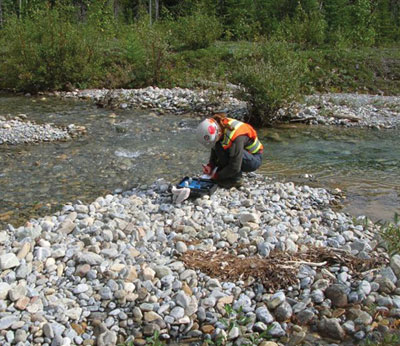
regulated companies when they have met expectations of compliance and enforcement actions, and present the associated analysis related to the CVA close-out. This will include linking associated documentation to support findings.
The result will be more data collected to measure effectiveness of conditions to protect environmental resources, protect the safety of workers and the public, and maintain the integrity of regulated facilities. This data will further enhance efficiency in conducting these activities, and the effectiveness of planning for future activities.
Online Reporting
In addition to our work on increasing the efficiency of the inspection process and enhancing data collection, the NEB took a major step towards improving the transparency of inspections activities. Inspections reports and compliance summaries related to the inspection activity are now posted online in one report. This allows the Canadian public to see at a glance what the NEB is looking at, and what we are finding. The publication of these activity reports allows the public to see the Board’s expectations of the regulated companies regarding any non-compliances which are observed by our inspection staff.

Reportable Incidents
In 2015, there were 90 reportable incidents under the Onshore Pipeline Regulations (OPR) compared to 72 in 2014. Figure 1 shows the number of events which occurred from 2008 through 2015 that resulted in an incident. While the number of incidents reported in 2015 increased when compared with 2014, it remains below both the 5 year and 3 year averages. There is evidence that this increase is partly caused by better understanding of incident reporting requirements as a result of the NEB Event Reporting Guidelines.
Figure 2 shows the breakdown of incident types reported from 2008 to now. The NEB is pleased to note that there have been zero fatalities reported for two consecutive years.
The incident types to notably increase year over year were “Adverse Environmental Effects”, “Operation Beyond Design Limits” and “Fires”. In the NEB Event Reporting Guidelines the
Figure 1: Total Number of Events Resulting in Incidents under the Onshore Pipeline Regulations (OPR) 2008-2015
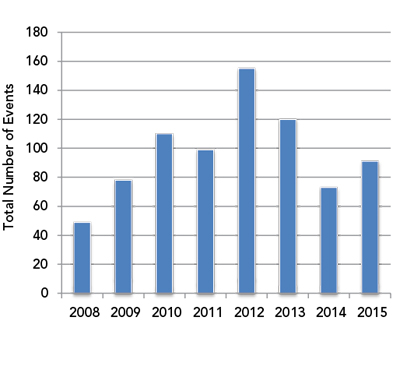
NEB provided significant guidance to companies on both “Adverse Environmental Effects” and “Operation Beyond Design Limits”; the increases in these incident types alone account for 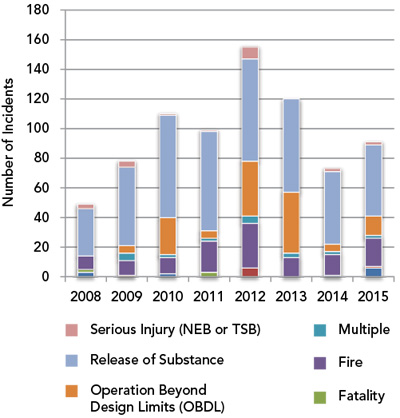 70 per cent of the difference between 2014 and 2015. As noted above, this suggests that increased clarity and understanding of reporting requirements resulted in an increase in reporting from companies rather than an increase in occurrence of these incidents, which is in the Board’s view a positive outcome.
70 per cent of the difference between 2014 and 2015. As noted above, this suggests that increased clarity and understanding of reporting requirements resulted in an increase in reporting from companies rather than an increase in occurrence of these incidents, which is in the Board’s view a positive outcome.
The remaining incident type that increased notably year over year was “Fires”. The increase in fires was as a result of equipment and electrical problems as well as welding or cutting. Root cause data for fires in 2015 does not yield a definitive common cause. In 2012/2013 NEB Compliance staff initiated a focus on equipment inspections. There were fewer fires reported the following year suggesting these efforts made some impacts. While there were no indications of a common or overlapping root cause for fires in 2015, the NEB Compliance staff will continue the focus on equipment inspections in 2016.
Figure 2: Number of OPR Incidents by Type, 2008 to 2015
Figure 3 shows the number of liquid releases reported from 2008 to 2015 as well as the total volume that was released. Fewer liquid releases and less total volume was released in 2015 than in 2014. In addition, there were no liquid releases that affected property off the pipeline Right of Way (RoW) or company property.
Damage Prevention
Preventing damage to pipelines is a shared responsibility. Pipelines are buried, which means they can be at risk for accidental damage from excavation or construction activity nearby. This type of damage is preventable. As the federal regulatory champion for the Canadian Common Ground Alliance, the NEB is invested in raising public awareness by providing information and encouraging cooperation, safety education, and compliance with requirements.
Figure 3: Total Volumes of Liquid Releases reported under the OPR, 2008-2015
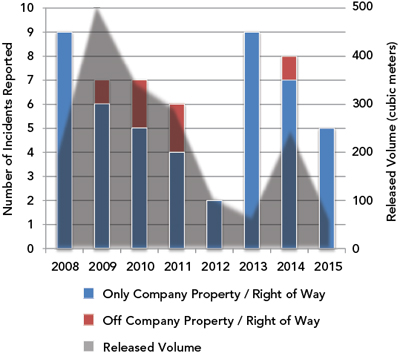
Unauthorized activities (UAs) occur when the required permission for an excavation or construction activity is not obtained, or when safety instructions are not followed. UAs are considered by the Board to be “near-miss incidents”, and a predictor of future behaviour. We use the information collected on UA reporting to plan Damage Prevention compliance verification activities, as well as targeted outreach and engagement to those who most need to hear it.
There were 224 reported UAs in 2015, compared to 144 for 2014. Although this appears to be a significant increase, the Board considers this a positive statistic, because it reflects more diligent company surveillance, and reliable reporting of what is actually happening. An increase in the number of reported UAs has been typical for most NEB-regulated companies over the past two years, due to enhanced awareness of NEB reporting requirements and improvements in the NEB’s UA reporting system.
Figure 4: 2015 Unauthorized Activities by Province
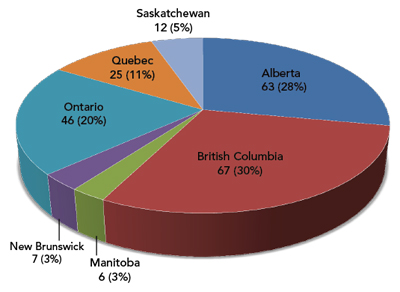
The distribution of reported UAs more evenly distributed among the provinces than in prior years, where British Columbia reported nearly half of all UAs in Canada.
The number of UAs is normalized across each province by calculating the number of UAs per 1000 km of pipeline. This data shows the hotspots for UAs and informs our outreach and engagement strategy, and is a factor in how compliance verification activities are planned.
Quebec, New Brunswick and BC stand out with UA rates that are much higher than the national average of 3.13 UAs per 1000 km of pipeline. Staff will address these regions in their Compliance Verification and Engagement plans.
The number of UAs is normalized across each province by calculating the number of UAs per 1000 km of pipeline. This data shows the hotspots for UAs and informs our outreach and engagement strategy, and is a factor in how compliance verification activities are planned.
Table 4: 2015 Unauthorized Activities per 1000 km pipeline by Province
| Province | Km of pipeline | Reported UAs | per 1000 KM |
|---|---|---|---|
| Alberta | 30700 | 63 | 2.05 |
| British Columbia | 7800 | 65 | 8.33 |
| Manitoba | 5600 | 6 | 1.07 |
| New Brunswick | 615 | 7 | 11.38 |
| Northwest Territories | 840 | 0 | 0.00 |
| Nova Scotia | 1020 | 0 | 0.00 |
| Ontario | 10995 | 46 | 4.18 |
| Quebec | 1480 | 25 | 16.89 |
| Saskatchewan | 12570 | 12 | 0.95 |
| Yukon | 20 | 0 | 0.00 |
| Grand Total | 71640 | 224 | 3.13 |
Ground disturbance continues to be the most prevalent UA violation activity type representing 80 per cent of all UAs reported. Professional excavators are responsible for 56 per cent of the violations and continue to be a target stakeholder group for engagement activities.
In 2015 damage prevention staff completed 13 damage prevention-related compliance verification activities. Through the Damage Prevention Outreach and Engagement plan, damage prevention staff engaged with approximately 8213 people from across Canada at 32 events, meetings and conferences. Staff made presentations at nine conferences and workshops in Quebec, Ontario, Alberta and BC, engaging with approximately 840 stakeholders in the excavator and contractor groups as the primary audience.
Figure 5: Forms of Engagement
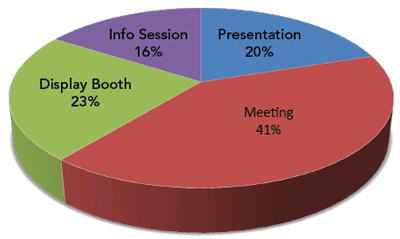
Figure 6: 2015 Attendees by Province
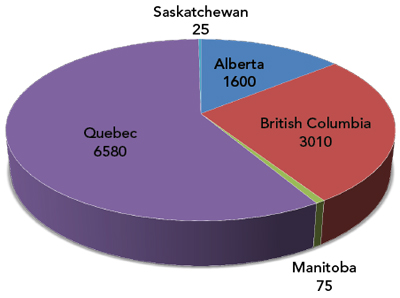

Energy Information
Canadians make decisions about energy every day – from consumer-level choices about products and consumption, to business and government decisions about investment and operations, to regulatory decisions that impact trade systems and safety. The increasing pace of change in Canadian and global energy markets and climate policy development means that the need for up-to-date analysis on energy supply and demand trends is greater than ever.
As Canada’s national energy regulator, a key aspect of the NEB’s mandate is to study energy matters over which Parliament has jurisdiction, and to provide the government with advice on those issues. And, we are actively seeking better, more user-friendly ways to produce and share energy market information with the public. Work is underway to expand the scope of our market reporting to include discussion of greenhouse gas emissions, the link between energy and environmental issues, and the role of new bestavailable technologies in our energy landscape.
In the current energy market environment, prices, economic growth, policies and regulation, action on climate change and the development and use of new technologies, all play an important role in shaping Canada’s energy future. It is our goal to help Canadians and policy makers understand these complex interactions through our analysis, reports, and statistics.
Energy Markets 2015
The Board monitors the integrated North American energy markets, to track and understand ongoing changes in the relationships between supply, infrastructure, demand and prices, and to stay current on the conditions in a quickly evolving energy market. That depth of understanding plays an integral part in our assessment of the applications submitted to construct and modify facilities, establish tolls and tariffs, and provide export or import authorizations.
One of the outputs of the market intelligence collected at the Board is energy data, and studies on specific energy issues. These products offer neutral, independent, fact-based energy information that provides context to supplement Canadians’ understanding of the Board’s regulatory decisions. These products support the Board’s status as an expert tribunal, increase the transparency of Canadian energy markets, and support Canadian energy literacy.
Canadian Energy Import/Export Volumes and Values
Canada’s Energy Story – 2015
In 2015, Canada’s crude oil production and exports increased, driven mostly by oil sands production growth. Global benchmark crude oil prices rebounded to the US$60s by mid-year, but subsequently declined to the mid US$30s by year-end. Global oil storage inventories remained persistently high, due in part to limited decline in United States (US) tight oil production, and weaker than expected demand from Europe and Asia. Similar to 2014, OPEC (Organization of the Petroleum Exporting Countries) agreed at its December 2015 meeting to not cut crude oil production to support prices. Alongside these global price movements, oil pipeline capacity additions in the US and Canada facilitated increased crude oil exports for Canadian producers. Meanwhile, Eastern Canadian refineries imported record levels of US light crude oil, displacing traditional sources from abroad.
In 2015, North American natural gas prices decreased due to steady production in Canada and growing production in the US. Demand for natural gas grew more modestly, creating plentiful supply. At the end of the storage injection season in mid-November, North American inventories reached an unprecedented level of 4.7 trillion cubic feet (Tcf). In addition, there was a trend of increasing imports of gas from the US into eastern Canadian markets. Finally, there was also a shift in global liquefied natural gas (LNG) market dynamics in 2015: widely available global supply, weaker than anticipated Asian demand, decreased prices, and escalating project costs.
In the electricity market, Canada’s supply mix continued to evolve. Renewable generation continued to grow, with wind capacity reaching 11,205 megawatts (MW) in 2015. This was also the case for gas-fired generation, which continued displacing coal generation due to lower gas prices and federal coal-fired generation regulations. In addition, multiple large hydro projects are under construction in British Columbia (BC), northern Manitoba, northeastern Quebec and Labrador and a significant expansion at the Mica dam in the interior of BC was completed in 2015.
NEB Energy Reports Released in 2015
- Canadian Energy Dynamics 2014 (released February 19, 2015) – An overview of key developments in Canada’s energy markets in 2014.
- Energy Futures 2013 Supplement: Demand Sensitivities (released April 28, 2015) – Sensitivity analysis on energy demand, based on Canada’s Energy Futures 2013 projections, with respect to demographics, technology, energy usage in oil sands and LNG, model transportation shifts and other evolving issues.
- Bakken Resource Assessment (released April 30, 2015) – This assessment was undertaken in partnership with the Province of Saskatchewan and estimates marketable oil resources in the Bakken play.
- Canol and Bluefish Resource Assessment (released May 22, 2015) – This assessment was completed in partnership with the Northwest Territories and estimates the in-place and marketable oil resources in the Canol and Bluefish plays.
- Short-term Canadian Natural Gas Deliverability 2015-17 (released June 2015)– This assessment examines factors expected to influence Canadian natural gas production over a three-year period. It provides an outlook for gas deliverability through December 2017.
- Canadian Energy Overview 2014 (released July15, 2015) – This report provides a review of energy market and supply developments in the past year through visual and digestible infographics.
- Short-term Canadian Conventional/Tight Oil Deliverability Outlook 2015-17 (released October 29, 2015) - This assessment examines factors expected to influence Canadian conventional and tight oil production over the period through December 2017.
- Market Snapshots – Weekly energy information updates that illustrate emerging trends in various segments of the energy market. They are brief, topical articles that provide energy information to Canadians.
- Prices, Trade and Feature Articles – Commodity prices and trade volumes are updated monthly and are supplemented by quarterly market analyses. Two special feature articles were released in 2015: 30th Anniversary of the Deregulation of Canada’s Natural Gas Prices and British Columbia Uses its Hydro System to Maximize Gains from Electricity Trade.

Canadian Energy Import/Export Volumes and Values
Crude Oil
Canada remains a net crude oil exporter and the largest supplier of crude oil to the United States. Total Canadian crude oil exports averaged approximately 3.0 million barrels per day (MMb/d) this year, which is a 6.2 per cent increase from 2014. Almost all Canadian crude oil exports, approximately 99 per cent, went to the US. Of the total export volume in 2015, approximately 71.3 per cent was heavy oil, up from 68.6 per cent in 2014. In 2015, the total value of crude oil exports was approximately C$51.9 billion based on an average export price of C$46.82 per barrel.
Natural Gas
In 2015, total Canadian natural gas exports averaged 207 million cubic metres per day (m³/day). Total natural gas imports averaged 54 million m³/day, including average LNG imports of 1.5 million m³/day. Therefore, net exports averaged approximately 150 million m³/day, which is similar to 2014. In 2015, the value of Canadian net exports of natural gas was approximately C$6.9 billion.
Electricity
In 2015, Canadian electricity exports, net-exports, and net revenue from electricity trade reached record highs. Exports totaled 67.6 terawatt hours (TWh), up 16 per cent from 2014. Imports declined by 30 per cent from 2014, reaching 8.9 TWh. Increasing exports and declining imports resulted in net exports of 58.6 TWh, up 28 per cent from 2014. Net revenue from electricity trade in 2015 reached C$2.8 billion, up 19 per cent from last year.
Figure 7 – Total Crude Exports 2006-2015
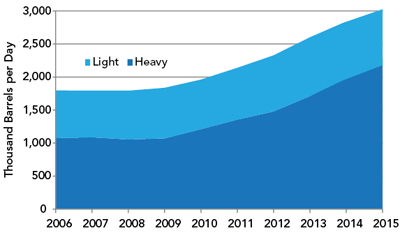
Figure 8 – Natural Gas Net Exports 2006-2015 (Exports less Imports)
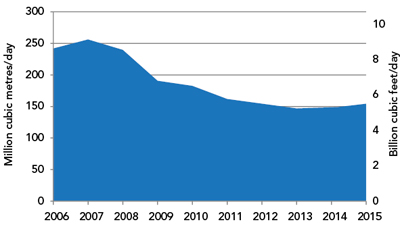
Figure 9 - Electricity Net Exports 2006-2015 (Exports less Imports)
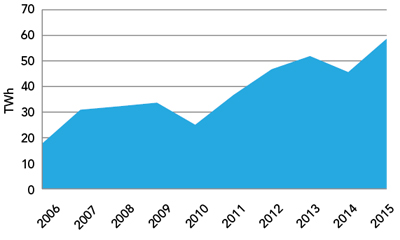
Part VI - Export & Import of Natural Gas, Crude Oil and Electricity
and electricity. Table 5 provides an overview of all orders, licences, and permits issued by the Board in 2015.
Please see Appendix F for a summary of commodity export and import licence applications filed with the National Energy Board in 2015.
Table 5 - Exports & Imports of Natural Gas, Crude Oil and Electricity Issued Under Part VI of the NEB Act – 2015
| Totals in 2015 | New | Amendments | Renewals | Revocations | Total |
|---|---|---|---|---|---|
| Propane short-term export orders | 10 | 0 | 70 | 1 | 81 |
| Butane short-term export orders | 8 | 0 | 56 | 0 | 64 |
| Oil short-term export orders | 12 | 4 | 158 | 4 | 178 |
| Gas short-term export and import orders | 164 | 6 | 0 | 12 | 182 |
| Electricity export permits issued | 10 | 4 | N/A | 2 | 16 |
| Propane long-term export licences | 1 | 1 | |||
| Gas long-term licences (import and export) including liquefied natural gas | 3 | 1 | 4 | ||
| Total | 208 | 14 | 284 | 20 | 526 |
Sharing information to improve energy data
To improve Canadian energy data and publicly available information, the NEB has built strategic alliances with provincial, national and international energy regulators and government agencies.
There are several initiatives underway, including:
- The Trilateral Initiative on Energy Information: The NEB is participating in the trilateral initiative on energy information with the US and Mexico. This Trilateral aims to create a framework for consultation and sharing of publicly available information among the participants, setting the stage for dialogue, comparisons and deliverables on information and energy outlooks for the North American region.
- NEB- EIA Cooperation: The NEB has also established a framework for continuous and regular dialogue with the US Energy Information Administration (EIA). This is a significant milestone, as the EIA is a world leader in collection, dissemination and provision of energy information. A draft MOU between the two organizations has been developed and is in the process of being finalized.
Through these initiatives, the NEB is learning and adopting best practices for energy information sharing.

Regulatory Excellence
Regulatory excellence is by nature a continually evolving state that is nimble and responsive. The NEB has been working with the Alberta Energy Regulator (AER) and others in the national and international field, to define excellence, understand how a regulator can foster excellence within its organization, and to continually monitor this state.
Following the release of the AER report “Listening, Learning, Leading – A Framework for Regulatory Excellence”, developed by Cary Coglianese from the University of Pennsylvania, our next step is to build an NEB-specific Framework that responds to a national energy regulator’s realities, challenges, and opportunities for excellence.
The NEB continues to work with other regulators around the world to examine the concept of regulatory excellence and learn from each other’s experiences. This includes work with:
- The Arctic Offshore Regulators Forum
- The International Regulators Forum
- The Organization of Economic Cooperation and Development
- The Canadian Community of Federal Regulators
- The Public Policy Forum on the Global Energy Regulators Summit
Internally, the Board has established Member-led committees - the Board Risk Management and Safety Committee, the Governance Committee and the Regulatory Excellence Committee - to challenge and consult on the continual improvement of the NEB’s regulatory framework.
NEB Culture
The NEB People Strategy
The Board takes pride in its technical and professional excellence as a regulator, and strives to attract, retain and develop highly qualified staff to work in a dynamic, results-based culture of excellence. Employees are our most valued resource and we depend on them to make our goals a reality. In our People Strategy, we commit to providing the following value proposition to staff:
- interesting and challenging work in the national public interest
- a workplace that supports learning and professional development
- a supportive and inclusive workplace, underpinned by a strong culture of values
- a work/life balance that works for each person
- a competitive compensation package
- effective leadership
Employment Equity and Diversity
The National Energy Board is committed to employment equity and welcomes diversity in the workplace. A diverse workforce that mirrors the community strengthens the NEB and plays an important role in attracting and retaining talented employees.
We will continue to promote diversity within the workforce and continue to improve our representation from within the various employment equity groups.
NEB is a Top 100 Employer in Canada!
In November, the NEB was again named as one of Canada’s Top 100 Employers for 2016 for the seventh year in a row (the NEB is a seven-time winner as we were also named in 2009). In addition to that honour, we were also named as one of Alberta’s Top Employers for 2016 and as one of Canada’s Top 100 Family Friendly Employers, the latter being a designation that recognizes employers offering progressive and forward-thinking programs for employees with young children, other dependents, and/or family responsibilities.
The Board is pleased to receive these honours as they showcase not only the types of programs offered to employees, but they also focus on the employees themselves. The NEB is not just a Top 100 Employer and Family Friendly Employer; it is a “Top 100 Team” that strives for excellence in all that it does.
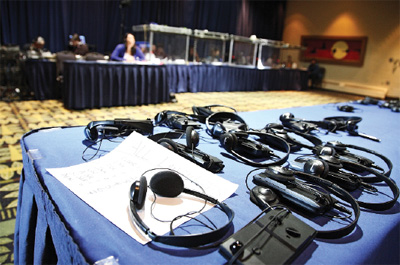

A Wealth of Experience
-
Board Bios
Chair / CEO
 Peter Watson
Peter Watson
- Deputy Minister, Executive Council, Government of Alberta. 2011-2014.
- Deputy Minister, Alberta Energy, Government of Alberta. 2008-2011.
- President, Clean Air Strategic Alliance, a multi-stakeholder alliance composed of representatives selected by industry, government and non-government organizations, to provide strategies to assess and improve air quality for Albertans, using a collaborative consensus process, 2005-2011.
- President, Alberta Water Council, a multi-stakeholder partnership with 24 Members from governments, industry, and non-government organizations. Its primary task is to monitor and steward implementation of the Alberta’s Water for Life strategy and to champion achievement of the strategy’s three goals, namely, a safe, secure drinking water supply, healthy aquatic ecosystems and reliable, quality water supplies for a sustainable economy, 2005-2008.
- Deputy Minister, Alberta Environment, Government of Alberta. 2005-2008.
- Assistant Deputy Minister, Environmental Assurance Division, Alberta Environment, Government of Alberta. 2002-2005.
Professional Affiliations, Degrees and Distinctions:
- Member of the Association of Professional Engineers, Geologists and Geophysicists of Alberta.
- Fellow of the Canadian Academy of Engineering.
- Completed Directors Education Program through the Institute of Corporate Directors.
- Named Alberta’s Resource Person of the Year, 2011.
- B.Sc. Civil Engineering.
Vice-Chair
 Lyne Mercier
Lyne Mercier
- Before joining the NEB, Ms. Mercier worked at Gaz Métro for over 29 years, serving 10 years in executive positions. At Gaz Métro she was Director of the gas supply division, where she was responsible for strategic policy related to natural gas supply and, for the management of natural gas transmission, storage and supply contracts. Prior to that, she was head of the pricing division, where she was responsible for toll design and cost-of-service allocation studies.
Professional Affiliations, Degrees and Distinctions:
- Bachelor of Commerce, St. Mary’s University.
- Executive MBA from l’École des Hautes Études Commerciales.
Member
 Roland George
Roland George
- Mr. George has worked primarily in the private energy sector for over three decades. He was Senior Principal at Purvin & Gertz, an international energy-consulting firm (1998-2006; Calgary). There Mr. George led the North American natural gas practice. He also held increasingly senior positions with: the Canadian Energy Research Institute (Vice President Electricity & Natural Gas Research; 1994-1997; Calgary), Gaz Métropolitain (Chief Economist & Executive Advisor - Strategy; Director - Marketing Programs; and other positions in gas supply, regulatory affairs, and business development; 1983-1993; Montréal), Téléglobe Canada (Advisor - Corporate & Regulatory Affairs; 1981-1983; Montréal) and Canadian Pacific Limited (Analyst - Economic & Financial Analysis; 1979-1981; Montréal).
Professional Affiliations, Degrees and Distinctions:
- Member of the National Association of Regulatory Utility Commissioners’ (NARUC) Gas Committee and subcommittee on Pipeline Safety and was a Member of the Energy Resources and Environment Committee, the Centre for Public Utilities’ Advisory Council, and the International Association of Energy Economists.
- He was previously a member of the Executive Committee and the Chair of the Regulatory Affairs Committee of the Canadian Association of Members of Public Utility Tribunals (CAMPUT) and past Chair of its Education Committee. Mr. George was also the Chair of the International Confederation of Energy Regulators’ Working Group on Competitiveness and Affordability. Prior to his appointment to the NEB, he was also active on industry associations and committees.
- Masters of Business Administration (MBA) degree from École des Hautes Études Commerciales (HEC).
- Master’s degree in Economics (MA) from Carleton University.
- Bachelor of Science degree (BSc) in Mathematics (major) and Computer Science from McGill University (1977).
Member
 Philip Davies, LLB, ICD.D
Philip Davies, LLB, ICD.D
- Before joining the NEB, Mr. Davies spent over 30 years of experience in acquiring, constructing and operating energy infrastructures and facilities in North America’s oil, gas and electric power industries.
- During his career, Mr. Davies has served as a member of several senior management teams - notably as Vice-President, Law and General Counsel of SaskPower; Vice-President, General Counsel and Corporate Secretary of Encana Gas Storage; and, Associate General Counsel of Encana Midstream and Marketing.
Professional Affiliations, Degrees and Distinctions:
- Director certification from the Institute of Corporate Directors, University of Toronto, Rotman School of Management.
- Completed the Executive Development Program at the University of Western Ontario, Ivey School of Business.
- Graduate of the University of Alberta, Faculty of Law.
Member
 Shane Parrish
Shane Parrish
- Mr. Parrish brings to the National Energy Board 24 years of experience in the area of community economic development in the Northwest Territories, Nunavut, and NE British Columbia. Over the past 18 years, Mr. Parrish has worked in consultation, indigenous business development and negotiations in the petroleum and mining industries. As a consultant in the firm he founded in 2002, he has represented First Nations clients in negotiations with major Canadian energy producers and pipeline companies, with a focus on access and benefits agreements.
- Previously, Mr. Parrish was Manager of Business Development for Canadian Petroleum Engineering Inc., where he worked with First Nations, government and industry in both Canada and Latin America. He was also the CEO of the Acho Dene Koe Corporate Group, where he oversaw the growth and development of band-owned corporations and their relationships with oil and gas companies.
- Mr. Parrish’s experience also includes five years as an Economic Development Officer with the Government of the Northwest Territories.
Professional Affiliations, Degrees and Distinctions:
- Bachelor of Arts in Economics from the University of Calgary.
- Diploma in Social Development from the Coady International Institute - St. Francis Xavier University.
- On November 20, 2013 Member Parrish’s qualifications and competencies were reviewed by the Standing Committee on Natural Resources and was found competent to perform the duties of the position.
Member
 Ron Wallace, Ph.D.
Ron Wallace, Ph.D.
- Dr. Wallace’s northern regulatory experience encompasses senior management positions with the Nunavut Resources Corporation and the Northwest Territories and Inuvialuit Water Boards. As Executive Vice President at AGRA Earth and Environmental (now AMEC Americas Ltd) he was involved in major oil and gas operations throughout the former Soviet Union and Russia where he also managed major oil spill remediation and environmental project assignments in conjunction with the World Bank.
- Dr. Wallace served as Chairman of the Alberta Environmental Monitoring Working Group and more recently as Vice-Chairman of the subsequent Alberta Environmental Monitoring Management Board that led to the 2013 Alberta legislation under Bill-31 to create a new provincial environmental monitoring agency.
- Dr. Wallace served as Manager for Environmental and Social Affairs with Petro-Canada and CanStar Oil Sands Ltd. He was subsequently President of Dominion Ecological Consulting Ltd., during which time he worked in environmental technology applications in northern Canada, Alberta, Venezuela and Ecuador. He has also participated in mediations and negotiations involving energy developers, northern Aboriginal communities and governments.
- Earlier in his career, Dr. Wallace was Senior Biologist with Environment Canada, based in Yellowknife, NWT with responsibilities for environmental regulatory enforcement throughout the North. He was subsequently a Senior Research Scientist with Fisheries and Oceans Canada, directing baseline studies for the Alberta Oilsands Environmental Research Program.
- He is published widely in refereed scientific journals and has written extensively on northern policy issues for the Canadian Global Affairs Institute (formerly CDFAI).
Professional Affiliations, Degrees and Distinctions:
- Ph.D. (1973) Aquatic Ecology and Environmental Toxicology (University of Waterloo)
- 1994 Alberta Business Award of Distinction (International Environmental Exports)
- 1996 Alberta Emerald Award for Environmental Excellence (Environment - Russia)
- 1997 Alliance of Manufacturers and Exporters Canada Award (Engineering - Russia)
- 1998 Canadian Association of Consulting Engineers Award (International Service)
- 2001 Corporate Technical Achievement Award (Advanced Materials Manufacturing) American Ceramic Society
- 2004 Entrepreneur of the Year (Alberta Region: Advanced Manufacturing Technologies)
Member
 Dr. Murray Lytle
Dr. Murray Lytle
- Dr. Murray Lytle has nearly 40 years’ experience in the energy and mining sectors spanning North America, South America and Asia.
- He has held a series of senior positions in the oil, gas and mining industries. Highlights include:
- Establishing and serving as General Manager of the Lima engineering office for H.A. Simons Ltd. (now AMEC E&C) of Vancouver, BC;
- Working as a manager and consultant on more than 30 mining projects in North and South America and Asia.
- He served as President and owner of Tessa Resource Consultants from 2001 to 2005 and Vice-President of Development for Sienna Gold Inc. from 2005 to 2009.
- In his most recent position, he served as the Divisional Manager for Snowden Mining Industry Consultants Inc., an internationally recognized mine engineering consultancy.
- He is fluent in both English and Spanish.
Professional Affiliations, Degrees and Distinctions:
- Ph.D., Mining Engineering (Corporate Social Responsibility) from the University of British Columbia.
- Member of the Association of Professional Engineers and Geoscientists of Alberta (P.Eng.).
Member
 Steven Kelly
Steven Kelly
- Mr. Steven Kelly has over 30 years of practical expertise in maximizing the potential of conventional and unconventional energy resources, and brings considerable technical and commercial knowledge of North American and global energy markets.
- Most recently he served as Vice President at IHS Energy, in the firm’s Calgary office. IHS is an international provider of market, industry and technical expertise.
- Mr. Kelly worked for 15 years at Purvin & Gertz Inc., a global independent energy consultancy, before its acquisition by IHS in 2011. He worked in the firm’s Calgary and London offices, and was a Senior Vice President and Director of the firm.
- Mr. Kelly began his career in the refining and marketing division at Shell Canada Limited. He progressed through various technical and planning roles in Sarnia, Edmonton and Calgary.
Professional Affiliations, Degrees and Distinctions:
- Bachelor’s degree in Chemical Engineering from McMaster University.
- Master’s degree in Chemical Engineering from McMaster University.
- Master’s in Business Administration from the University of Calgary.
- Registered Professional Engineer (P.Eng.) with the Association of Professional Engineers and Geoscientists of Alberta (APEGA).
Member
 Dr. Keith Chaulk
Dr. Keith Chaulk
- Dr. Keith Chaulk has published numerous peer reviewed articles ranging from terrestrial and marine ecology to indigenous land use.
- His northern regulatory experience includes tenures on the Voiseys Bay Environmental Management Board, the Nunatsiavut Land Use Planning Authority, the Lower Churchill Environmental Assessment Panel.
- Dr. Chaulk has held senior leadership positions in a number of different settings.
- From 2013-2015 he was the Vice President Indigenous with the University of the Arctic. The University of the Arctic is an international consortium of over 150 of the world’s top universities sharing an interest in promoting education and research in the North. As Vice President Indigenous (VPI) Dr. Chaulk provided strategic visioning to the UArctic leadership team and was an ex-officio member of the UArctic Board of Governors.
- From 2007-2015 Dr. Chaulk was the Director of the Labrador Institute of Memorial University and led its revitalization and transformation into a multi-disciplinary research and education institute with a focus on sustainable development.
- Early in his career Dr. Chaulk worked on the environmental mitigation program for low level military flight training in Labrador and Quebec and conducted baseline research for the Voisey’s Bay Mine/Mill environmental impact statement.
- He spent over a decade working for Environment Canada in Labrador, while mainly focused on work of the conservation branch, he also conducted work for other divisions of the department including environmental protection.
Professional Affiliations, Degrees and Distinctions:
- B.Sc., Biology, Dalhousie University, 1994
- M.Sc., Biology, Acadia University, 2001.
- PhD, Cognitive and Behavioural Ecology, Memorial University, 2006.
Temporary Member
 David Hamilton
David Hamilton
- A resident of Sidney, British Columbia, Mr. Hamilton has more than 30 years of experience working in the Northwest Territories and Nunavut in the development of communities through both the parliamentary and democratic processes.
- Mr. Hamilton was Deputy Minister and Clerk of the Legislative Assembly of the Northwest Territories for 20 years. He also held the appointment as Chief Electoral Officer for the Northwest Territories. Mr. Hamilton administered the first general election for Members to the Legislative Assembly in Canada’s two new Territories, Nunavut and the Northwest Territories, following division of the NWT in 1999. Mr. Hamilton participated in the ratification votes for the Gwich’in Land Claim Agreement, the Sahtu Settlement Agreement and the Inuit Land Claim Settlement.
- Mr. Hamilton has been involved in the electoral process in Canada for over 30 years and has extensive experience in community development at the Territorial, Provincial and International level.
- The Governor in Council has re-appointed Mr. Hamilton as Temporary Board Member for a three-year term ending 30 June 2018.
Professional Affiliations, Degrees and Distinctions:
- Master’s degree in Leadership and Training from Royal Roads University, Victoria, British Columbia.
Temporary Member
 Alison Scott
Alison Scott
- Ms. Scott retired from the Nova Scotia government in 2012.
- During her thirty years of public service she served in various capacities including Clerk of the Executive Counsel and Secretary to Cabinet, Deputy Minister of Energy and Intergovernmental Affairs.
- Prior to her time as a Deputy Minister, she was a litigator with the Nova Scotia Department of Justice, specializing in administrative law and constitutional law. While with the NS Department of Energy Ms. Scott oversaw the development of Nova Scotia’s energy research strategy and was instrumental in establishing ocean energy research institutions to further advance the development of Nova Scotia’s offshore petroleum, tidal energy and carbon capture and storage opportunities.
- In 2009 Ms. Scott was seconded to Environment Canada to advise the Deputy Minister in the development of Canada’s approach to climate change negotiations.
- She is a former member of: the federal government’s Energy Sector Sustainability Table, Petroleum Research Atlantic, the Oil and Gas Administration Advisory Council (established under the Canadian Oil and Gas Act), and past chair of the Canadian Bar Association Constitutional Law and Human Rights section, a former part-time member of the faculty at Dalhousie law School, and the Attorney General’s representative on Nova Scotia Barrister’s Society Bar Council.
- She is currently a member of the Board of Directors of the Dalhousie Law School Alumni Association.
- Ms. Scott is the co-author of seven editions of the travel guide, “Exploring Nova Scotia” (Formac Publishing, Halifax NS).
Professional Affiliations, Degrees and Distinctions:
- Graduate of Dalhousie Law School (LLB) and St FX University (BA Hons.).
- Recipient of the Premiers Award for utstanding public Service in 2008 and 1992.
- Recipient of the Queen’s 125th Anniversary of the Confederation of Canada Medal (1992), for significant service to her community and Canadians.
Temporary Member
 James Ballem
James Ballem
- Mr. Ballem has been a Board Member since 2012.
- In 2007, Mr. Ballem established an energy consulting business, with an emphasis on renewable energy
- In 2004, he became Minister of Environment, Energy and Forestry. While in that portfolio he was responsible for the development of a major wind farm and the creation of the Renewable Energy Act.
- In 2000, Mr. Ballem was named Minister of Health and Social Services, a post he retained until 2003 when he was named Attorney General and Minister of Environment and Energy.
- In 1996, Mr. Ballem was elected to the PEI Legislative Assembly and served as Chair of the Standing Committee on Agriculture, Forestry and the Environment. This committee was responsible for developing the Implementation Strategy for the “Round Table Report on Land Use”, and conducted a review of the PEI Lands Protection Act, the legislation responsible for the ownership and use of Agricultural land.
- From 1976-1993, Mr. Ballem owned and operated a dairy farm in partnership with his father.
- In 1983, Mr. Ballem was named the first Chair of the PEI Milk Marketing Board. He served in that capacity until 1987. At that time, he was appointed as Chair of the PEI Potato Commission and the PEI representative on the Sectorial Advisory Group on International trade, a position he held until 1989.
Professional Affiliations, Degrees and Distinctions:
- Degree in Business Administration, University of Prince Edward Island.
Temporary Member
 Mike Richmond
Mike Richmond
- Originally from Montréal, Québec, Mr. Richmond practices law in Toronto, Ontario at McMillan LLP, where he is Co-Chair of the Energy and Power Group. As an energy lawyer, Mr. Richmond has extensive experience in electricity, renewables and utilities.
- From 2001 to 2002, Mr. Richmond served the Government of Ontario as Senior Energy Policy Advisor during the restructuring of Ontario’s electricity markets. In addition, Mr. Richmond has served on the Boards of Directors of Toronto Hydro Corporation, the Ontario Energy Association, and the Ontario Sustainable Energy Association.
- In recent years, he has served as a guest lecturer on energy policy at Queen’s University, and has spoken and written extensively on matters relating to energy policy and regulation.
Professional Affiliations, Degrees and Distinctions:
- Law degree from the University of Toronto.
- Bachelor degree of Social Sciences from the University of Ottawa.
- Member of the Law Society of Upper Canada.
Temporary Member
 Jacques Gauthier
Jacques Gauthier
- Mr. Gauthier’s most recent position before joining the Board was serving as the President and Chief Executive Officer of LVM Inc., which is a national firm specializing in environmental geotechnical and energy services. Throughout his career, Mr. Gauthier has contributed to the creation and development of major energy projects in Canada, the United States and Europe. In addition, he has held the position of President and CEO of Boralex Inc., one of Canada’s largest private renewable energy producers.
- He is currently the Chairman of the Board of the Québec Wildlife Foundation.
- He has served on a wide variety of boards of directors and committees, including the Organizing Committee of the Vancouver 2010 Olympic Games, the Canadian Olympic Committee, and the Prime Minister’s Advisory Committee on the Public Service.
- Between 2008-2010, Mr. Gauthier was the President of the Advisory Committee on Official Languages for the Vancouver 2010 Olympic Games.
- Mr. Gauthier is passionate about Official Languages, a guest speaker at numerous Quebec business and energy industry forums.
Professional Affiliations, Degrees and Distinctions:
- Bachelor of Law degree from the Université de Sherbrooke.
- Member of the Bar of the Province of Québec.
- In 2012 Mr. Gauthier received the Québec Mercuriades Award in recognition of excellence in Occupational Health and Safety.
Appendices
Appendix A: Hearing Decisions and Recommendations Issued in 2015
(as of 31 December 2015)
| Name | File Number | Company | Length | Commodity | Application Received |
Hearing Days |
Recommendation / Decision Released |
|---|---|---|---|---|---|---|---|
| Alliance Tolls New Services | RH-002-2014 | Alliance Pipeline Ltd. | N/A | Gas | 22 May 2014 | 2 | 9 July 2015 |
| TCPL King’s North Connection | GHW-001-2014 | TransCanada Pipelines Ltd. | 11 km | Gas | 15 August 2014 | 1 | 30 July 2015 |
| Ruger Energy Abandonment | MHW-002-2014 | Ruger Energy Inc. | 580 m | Oil | 2 October 2014 | N/A | 31 March 2015 |
| NGTL North Montney | GH-001-2014 | NOVA Gas Transmission Ltd. | 301 km | Gas | 8 November 2013 | 17 | 15 April 2015 |
| Pouce Coupe A Pipeline Abandonment | MH-003-2015 | Alta Gas Holding Inc. | 3.0 km | Gas | 23 December 2014 | N/A | 29 May 2015 |
Appendix B: Hearings in Progress as of 31 December 2015
(as of 31 December 2015)
| Name | Hearing Order Number | Company | Length | Commodity | Application Received | Hearing Days |
|---|---|---|---|---|---|---|
| NGTL 2017 System Expansion | GH-002-2015 | NOVA Gas Transmission Ltd. | 230 km | Gas | 2 April 2015 | OTEFootnote 4: 4 days Hearing: N/A |
| TCPL Energy East | OH-001-2015 | TransCanada Pipelines Ltd. | 4,600 km | Oil | 30 October 2014 | OTE: 10 days Hearing: N/A |
| Enbridge Line 3 Replacement Program | OH-002-2015 | Enbridge Pipelines Inc. | N/A | Oil | 5 November 2014 | OTE: 8 days Hearing: 1 |
| Facilities & Expansion (TMX III) | OH-001-2014 | TMPL - Trans Mountain Expansion | 987 km | Oil | 16 December 2013 | OTE: Footnote 423 days in 2014 (BC/AB) Hearing days: 1 day in 2015 (Calgary) |
| Lake Erie Connector Project | EH-001-2015 | ITC Lake Erie Connector LLC | 117 km | Electricity | 19 May 2015 | N/A |
| Towerbirch Extension | GH-003-2015 | NOVA Gas Transmission Ltd. | 87 km | Gas | 2 September 2015 | N/A |
Appendix C - Court Challenges to Board or GiC Decisions in 2015
The following is a summary of challenges to Board decisions in 2015
Geophysical Services Incorporated (GSI)
Geophysical Services Incorporated
(Lynx Canada Information Systems Ltd.)
In June 2009, GSI took legal action against Lynx Canada Information Systems Ltd. (Lynx) in the Alberta Court of Queen’s Bench for copyright infringement relating to geophysical information and related relief. On 27 May 2011, Lynx brought a Third Party Claim against the National Energy Board. On 4 June 2013, GSI filed an Amended Statement of Claim naming the NEB directly as a defendant for the full amount of its claim. The file is ongoing at year end.
Geophysical Services Incorporated (Olympic Seismic Ltd.)
On 19 December 2012, GSI filed with the Alberta Court of Queen’s Bench a Statement of Claim naming Olympic Seismic Ltd. (Olympic) and the NEB as defendants for copyright infringement relating to geophysical information and related relief. Olympic filed a Third Party claim against the NEB on 23 December 2013. The file is ongoing at year end.
Geophysical Services Incorporated
(Arcis Seismic Solutions Corp.)
On 6 March 2013, GSI filed with the Alberta Court of Queens’ Bench a Statement of Claim naming Arcis Seismic Solutions Corp., the NEB and others as defendants for copyright infringement relating to geophysical information and related relief. The file is ongoing at year end.
Geophysical Services Incorporated
(West Canadian Digital Imaging Inc.)
On 2 May 2012, GSI took legal action against West Canadian Digital Imaging Inc. (West Canadian) in the Alberta Court of Queen’s Bench for copyright infringement relating to geophysical information and related relief. On 13 March 2013, West Canadian brought a Third Party Claim against the National Energy Board. On 22 July 2013, GSI filed an Amended Statement of Claim naming the NEB directly as a defendant for the full amount of the claim. The file is ongoing at year end.
Geophysical Services Incorporated
(Exploration Geosciences Ltd.)
On 22 January 2014, GSI filed with the Alberta Court of Queen’s Bench a Statement of Claim naming Exploration Geosciences Ltd., the NEB and others as defendants for copyright infringement relating to geophysical information and related relief. GSI filed an Amended Statement of Claim on 6 May 2014. The file is ongoing at year end.
Geophysical Services Incorporated
(Her Majesty the Queen in Right of Canada)
On 14 May 2014, GSI filed with the Alberta Court of Queen’s Bench a Statement of Claim naming Her Majesty the Queen in Right of Canada, the NEB and others as defendants for copyright infringement relating to geophysical information and related relief. The file is ongoing at year end.
Enbridge Line 9B Reversal and Line 9 Capacity Expansion Project
Chippewas of the Thames First Nation
On 7 April 2014, the Chippewas of the Thames First Nation filed with the Federal Court of Appeal a Notice of Motion for Leave to Appeal the NEB Reasons for Decision for the Line 9B Reversal and Line 9 Capacity Expansion Project issued on 6 March 2014. The Federal Court of Appeal granted the Motion for Leave to Appeal on 4 June 2014. The Chippewas of the Thames First Nation filed their Notice of Appeal on 1 August 2014. The Federal Court of Appeal dismissed the Appeal on 20 October 2015. On 18 December 2015 the Chippewas of the Thames filed an Application for Leave to Appeal with the Supreme Court of Canada. The file is ongoing at year end.
Northern Gateway Project
Federation of British Columbia Naturalists
(BC Nature)
On 17 January 2014, BC Nature filed with the Federal Court of Appeal a Notice of Application for Judicial Review in respect of the Joint Review Panel Report for the Enbridge Northern Gateway Project issued on 19 December 2013. The hearing was held in October 2015. The Federal Court of Appeal’s decision had not been issued at year end.
On 14 July 2014, BC Nature filed with the Federal Court of Appeal a Notice of Motion for Leave to Seek Judicial Review of the Order of the Governor in Council of 17 June 2014 regarding the Enbridge Northern Gateway Project. The Federal Court of Appeal granted the Leave to Apply for Judicial Review on 26 September 2014. On 3 October 2014, BC Nature filed with the Federal Court of Appeal a Notice of
Application for Judicial Review of the Order of the Governor in Council. The hearing was held in October 2015. The Federal Court of Appeal’s decision had not been issued at year end.
ForestEthics Advocacy Association, Living Oceans Society and Raincoast Conservation Foundation (ForestEthics)
On 17 January 2014, ForestEthics filed with the Federal Court of Appeal a Notice of Application for Judicial Review in respect of the Joint Review Panel Report for the Enbridge Northern Gateway Project issued on 19 December 2013. The hearing was held in October 2015. The Federal Court of Appeal’s decision had not been issued at year end.
On 11 July 2014, ForestEthics filed with the Federal Court of Appeal a Notice of Motion for Leave to Seek Judicial Review of the Order of the Governor in Council of 17 June 2014 regarding the Enbridge Northern Gateway Project. The Federal Court of Appeal granted the Leave to Apply for Judicial Review on 26 September 2014. On 3 October 2014, ForestEthics filed with the Federal Court of Appeal a Notice of Application for Judicial Review of the Order of the Governor in Council. The hearing was held in October 2015. The Federal Court of Appeal’s decision had not been issued at year end.
On 10 July 2014, ForestEthics filed with the Federal Court of Appeal a Notice of Motion for Leave to Appeal the Certificates of Public Convenience and Necessity issued by the NEB on 18 June 2014 in respect of the Enbridge Northern Gateway Project. The Federal Court of Appeal granted the Leave to Appeal on 26 September 2014. ForestEthics filed their Notice of Appeal on 25 November 2015. The hearing was held in October 2015. The Federal Court of Appeal’s decision had not been issued at year end.
Gitga’at First Nation
On 17 January 2014, Gitga’at First Nation filed with the Federal Court of Appeal a Notice of Application for Judicial Review in respect of the Joint Review Panel Report for the Enbridge Northern Gateway Project issued on 19 December 2013. The hearing was held in October 2015.
The Federal Court of Appeal’s decision had not been issued at year end.
On 14 July 2014, Gitga’at First Nation filed with the Federal Court of Appeal a Notice of Motion for Leave to Seek Judicial Review of the Order of the Governor in Council of 17 June 2014 regarding the Enbridge Northern Gateway Project. The Federal Court of Appeal granted the Leave to Apply for Judicial Review on 26 September 2014. On 3 October 2014, Gitga’at First Nation filed with the Federal Court of Appeal a Notice of Application for Judicial Review of the Order of the Governor in Council. The hearing was held in October 2015. The Federal Court of Appeal’s decision had not been issued at year end.
Gitxaala Nation
On 17 January 2014, Gitxaala Nation filed with the Federal Court of Appeal a Notice of Application for Judicial Review in respect of the Joint Review Panel Report for the Enbridge Northern Gateway Project issued on 19 December 2013. The hearing was held in October 2015.
The Federal Court of Appeal’s decision had not been issued at year end.
On 11 July 2014, Gitxaala Nation filed with the Federal Court of Appeal a Notice of Motion for Leave to Seek Judicial Review of the Order of the Governor in Council of 17 June 2014 regarding the Enbridge Northern Gateway Project. The Federal Court of Appeal granted the Leave to Apply for Judicial Review on 26 September 2014. On 2 October 2014, Gitxaala Nation filed with the Federal Court of Appeal a Notice of Application for Judicial Review of the Order of the Governor in Council. The hearing was held in October 2015. The Federal Court of Appeal’s decision had not been issued at year end.
On 16 July 2014, Gitxaala Nation filed with the Federal Court of Appeal a Notice of Motion for Leave to Appeal the Certificates of Public Convenience and Necessity issued by the NEB on 18 June 2014 in respect of the Enbridge Northern Gateway Project. The Court granted the Motion for Leave to Appeal on 26 September 2014. Gitxaala Nation filed their Notice of Appeal on 25 November 2015. The hearing was held in October 2015. The Federal Court of Appeal’s decision had not been issued at year end.
Council of the Haida Nation
On 14 July 2014, the Council of the Haida Nation filed with the Federal Court of Appeal a Notice of Motion for Leave to Seek Judicial Review of the Order of the Governor in Council of 17 June 2014 regarding the Enbridge Northern Gateway Project. The Federal Court of Appeal granted the Leave to Apply for Judicial Review on 26 September 2014. On 3 October 2014, the Council of the Haida Nation filed with the Federal Court of Appeal a Notice of Application for Judicial Review of the Order of the Governor in Council. The hearing was held in October 2015.
The Federal Court of Appeal’s decision had not been issued at year end.
Haisla Nation
On 17 January 2014, Haisla Nation filed with the Federal Court of Appeal a Notice of Application for Judicial Review in respect of the Joint Review Panel Report for the Enbridge Northern Gateway Project issued on 19 December 2013. The hearing was held in October 2015.
The Federal Court of Appeal’s decision had not been issued at year end.
On 11 July 2014, Haisla Nation filed with the Federal Court of Appeal a Notice of Motion for Leave to Seek Judicial Review of the Order of the
Governor in Council of 17 June 2014 regarding the Enbridge Northern Gateway Project. The Federal Court of Appeal granted the Leave to Apply for Judicial Review on 26 September 2014. On 3 October 2014, Haisla Nation filed with the Federal Court of Appeal a Notice of Application for Judicial Review of the Order of the Governor in Council. The hearing was held in October 2015. The Federal Court of Appeal’s decision had not been issued at year end.
On 16 July 2014, Haisla Nation filed with the Federal Court of Appeal a Notice of Motion for Leave to Appeal the Certificates of Public Convenience and Necessity issued by the NEB on 18 June 2014 in respect of the Enbridge Northern Gateway Project. The Federal Court of Appeal granted the Motion for Leave to Appeal on 26 September 2014. Haisla Nation filed their Notice of Appeal on 25 November 2015. The hearing was held in October 2015. The Federal Court of Appeal’s decision had not been issued at year end.
Kitasoo Xai’Xais Band and Heiltsuk Nation (Kitasoo and Heiltsuk)
On 11 July 2014, Kitasoo and Heiltsuk filed with the Federal Court of Appeal a Notice of Motion for Leave to Seek Judicial Review of the Order of the Governor in Council of 17 June 2014 regarding the Enbridge Northern Gateway Project. The Federal Court of Appeal granted the Leave to Apply for Judicial Review on 26 September 2014. On 3 October 2014, Kitasoo and Heiltsuk filed with the Federal Court of Appeal a Notice of Application for Judicial Review of the Order of the Governor in Council. The hearing was held in October 2015. The Federal Court of Appeal’s decision had not been issued at year end.
Nak’azdli and Nadleh Whut’en First Nations (Nak’azdli and Nadleh Whut’en)
On 14 July 2014, Nak’azdli and Nadleh Whut’en filed with the Federal Court of Appeal a Notice of Motion for Leave to Seek Judicial Review of the Order of the Governor in Council of 17 June 2014 regarding the Enbridge Northern Gateway Project. The Federal Court of Appeal granted the Leave to Apply for Judicial Review on 26 September 2014. On 3 October 2014, Nak’azdli and Nadleh Whut’en filed with the Federal Court of Appeal a Notice of Application for Judicial Review of the Order of the Governor in Council. The hearing was held in October 2015. The Federal Court of Appeal’s decision had not been issued at year end.
Unifor
On 14 July 2014, Unifor filed with the Federal Court of Appeal a Notice of Motion for Leave to Seek Judicial Review of the Order of the Governor in Council of 17 June 2014 regarding the Enbridge Northern Gateway Project. The Federal Court of Appeal granted the Leave to Apply for Judicial Review on 26 September 2014. On 3 October 2014, Unifor filed with the Federal Court of Appeal a Notice of Application for Judicial Review of the Order of the Governor in Council. The hearing was held in October 2015. The Federal Court of Appeal’s decision had not been issued at year end.
On 16 July 2014, Unifor filed with the Federal Court of Appeal a Notice of Motion for Leave to Appeal the Certificates of Public Convenience and Necessity issued by the NEB on 18 June 2014 in respect of the Enbridge Northern Gateway Project. The Court granted the Motion for Leave to Appeal on 26 September 2014. Unifor filed their Notice of Appeal on 25 November 2015. The hearing was held in October 2015. The Federal Court of Appeal’s decision had not been issued at year end.
Trans Mountain Pipeline Expansion Project
Tsleil-Waututh Nation
On 2 May 2014, the Tsleil-Waututh Nation filed with the Federal Court of Appeal a Notice of Motion for Leave to Appeal the NEB’s 2 April 2014 Hearing Order regarding the Trans Mountain Pipeline Expansion Project, and related decisions of the NEB on the same date. The Federal Court of Appeal granted the Motion for Leave to Appeal on 10 July 2014. On 8 September 2014, the Tsleil-Waututh Nation filed its Notice of Appeal. The file is ongoing at year end.
Lynne M. Quarmby, Eric Doherty, Ruth Walmsley, John Vissers, Shirley Samples, Foresethics Advocacy Association, Tzeporah Berman, John Clarke and Bradley Shende (Applicants)
On 29 October 2014, the Applicants filed with the Federal Court of Appeal a Notice of Motion for Leave to Appeal the NEB’s 2 October 2014 standing decision for the Trans Mountain Pipeline Expansion Project. The Applicants argued that the standing test in section 55.2 of the NEB Act or, alternatively, the Board’s application of it in the TMX hearing, violated the Charter. The Federal Court of Appeal dismissed the Motion for Leave to Appeal on 23 January 2015. On 19 March 2015, the Applicants filed an Application for Leave to Appeal with the Supreme Court of Canada. The Supreme Court of Canada dismissed the Application on 10 September 2015.
City of Burnaby (Burnaby)
On 8 September 2014, Burnaby filed a Statement of Claim with the Supreme Court of British Columbia seeking injunctive relief against Trans Mountain Pipeline ULC and declarations against the NEB. The Statement of Claim raises issues involving access to Burnaby land for pipeline routing surveys. An Application for a temporary injunction against access to Burnaby land for survey purposes was dismissed by the Supreme Court of British Columbia on 17 September 2014. On 2 October 2014, Burnaby filed with the British Columbia Court of Appeal a Notice of Application for Leave to Appeal the 17 September 2014 Order of the Supreme Court of British Columbia. That Application for Leave to Appeal was dismissed by the British Columbia Court of Appeal on 27 November 2014. On 4 December 2014, Burnaby made an Application to the British Columbia Court of Appeal to vary the dismissal Order. On 13 February 2015, the British Columbia Court of Appeal dismissed the Application to vary the Order. Other components of Burnaby’s Statement of Claim were pursued in a summary trial before the Supreme Court of British Columbia in October 2015. On 5 November 2015, the Supreme Court of British Columbia dismissed the Application. On 1 December
2015, Burnaby filed with the British Columbia Court of Appeal a Notice of Appeal of the Supreme Court of British Columbia’s 5 November 2015 decision. The file is ongoing at year end.
Dr. Gary Smith, Andrée Stow, Petronella Smid, El Punnett, Laura Hansen, Paul Christensen, Karen Larson and Mathias Hennig (Applicants)
On 10 June 2014, the Applicants filed with the Federal Court a Notice of Application for Judicial Review in respect of the NEB Funding Review Committee and Chief Operating Officer’s 7 May 2014 decisions regarding the Applicants’ requests for participant funding relating to the Trans Mountain Expansion Project application. The Federal Court dismissed the Application for Judicial Review on 22 September 2015.
North Montney Project
Blueberry River First Nation
On 6 July 2015, the Blueberry River First Nations filed with the Federal Court of Appeal a Motion for Leave to apply for Judicial Review of the Order in Council, P.C. 2015-799, directing the Board to issue a certificate of public convenience and necessity for Nova Gas Transmission Ltd.’s North Montney project. The Federal Court of Appeal dismissed the Motion on 12 August 2015.
Saulteau First Nations
On 6 July 2015, the Saulteau First Nations filed with the Federal Court of Appeal a Motion for Leave to apply for Judicial Review of the Order in Council, P.C. 2015-799, directing the Board to issue a certificate of public convenience and necessity for Nova Gas Transmission Ltd.’s North Montney project. The Federal Court of Appeal dismissed the Motion on 12 August 2015. On 13 October 2015, Saulteau First Nations filed with the Supreme Court of Canada an Application for Leave to Appeal. The file is ongoing at year end.
TGS-NOPEC Geophysical Company ASA, Petroleum GeoServices and Multi Klient Invest AS NorthEastern Canada 2D Seismic Survey
Hamlet of Clyde River, Nammautaq Hunters & Trappers Organization – Clyde River, and Jerry Natanine (Applicants)
On 28 July 2014, the Applicants filed with the Federal Court of Appeal a Notice of Application for Judicial Review in respect of the 26 June 2014 decision of the NEB to grant a Geophysical Operations Authorization to TGS-NOPEC Geophysical Company ASA and others, to conduct a 2D marine seismic survey in Baffin Bay and Davis Strait. The Federal Court of Appeal dismissed the Application for Judicial Review on 17 August 2015. On 15 October 2015, the Applicants filed with the Supreme Court of Canada an Application for Leave to Appeal. The file is ongoing at year end.
Energy East Project
Centre Québécois du Droit de l’Environnement
et France Lamonde
On 4 February 2015, the Centre Québécois du Droit de l’Environnement et France Lamonde filed with the Federal Court of Canada a Motion for an interlocutory injunction to suspend the Application to Participate and the Project Funding Program’s deadlines for the Energy East Project until either the report from the Commissioner of Official Languages is issued or the entire French version of the Energy East Project application is officially posted on the NEB’s website. The Federal Court of Canada dismissed the Motion on 16 February 2015.
Edmonton to Hardisty Project
Samson Cree Nation
On 20 April 2015, the Samson Cree Nation filed with the Federal Court of Appeal a Notice of Application for Judicial Review of the NEB’s decision of 20 March 2015 regarding Samson Cree Nation’s request to suspend Certificate OC-062 and related construction activities on the Edmonton to Hardisty Project. The file is ongoing at year end.
Prince Rupert Gas Transmission Project
Michael Sawyer
On 29 December 2015, Michael Sawyer filed with the Federal Court of Appeal a Notice of Motion for Leave to Appeal the NEB’s 30 November 2015 decision on a requested declaration that the proposed Prince Rupert Gas Transmission Project is under NEB jurisdiction. The file is ongoing at year end.
Others
Jim Juras
On 12 August 2015, Jim Juras filed with the Federal Court of Appeal a Notice of Application for Leave to Appeal or an Application for Leave to apply for Judicial Review of the NEB’s Letter Decisions dated 15 July 2015 and 25 September 2013, regarding reclamation required to be undertaken by TransCanada PipeLines Ltd. on Mr. Juras’ property. The file is ongoing at year end.
The Masha Krupp Translation Group Ltd.
On 18 August 2015, the Masha Krupp Translation Group Ltd. filed with the Court of Queen’s Bench of Alberta a Statement of Claim naming the NEB and others as defendants for breach of contract and related relief. The file is ongoing at year end.
Appendix D – Certificates and Orders Oil
Orders Issued During 2015 Approving Oil Pipeline Facilities Including Pipeline Construction
Not Exceeding 40 Kilometres in Length
| Applicant | Order Number | Date Issued | Description |
|---|---|---|---|
| Enbridge Pipelines Inc. | XO-E101-021-2015 | 5 December 2015 | Line 67 Upgrades at Hardisty File OF-Fac-Oil-E101-2015-14 01 |
| Enbridge Pipelines Inc. | AO-002-XO-E101-016-2015 | 25 November 2015 | Line 11 Westover Segment Replacement Project File OF-Fac-Oil-E101-2015-01 01 |
| Enbridge Pipelines Inc. | XO-E101-020-2015 | 12 November 2015 | Husky Connection Upgrade at Hardisty Terminal Project File OF-Fac-Oil-E101-2015-12 01 |
| Enbridge Pipelines Inc. | AO-002-XO-E101-004-2013 | 17 October 2015 | Alberta Clipper Capacity Expansion Project File OF-Fac-Oil-E101-2012-11 03 01 |
| Enbridge Pipelines Westspur Inc. (EPWI) |
XO-E103-019-2015 | 8 October 2015 | Manitoba Interconnect Project. The removal of existing segments plus the construction of new piping associated with Lines 23A and 23B File OF-Fac-Oil-E103-2015-01 01 |
| Trans Mountain Pipeline ULC | XO-T260-017-2015 | 3 September 2015 | McLeod River HDD Pipe Replacement Project File OF-Fac-Oil-T260-2015-04 01 |
| Enbridge Pipelines Inc. | XO-E101-016-2015 | 21 August 2015 | Line 11 Westover Segment Replacement Project File OF-Fac-Oil-E101-2015-01 01 |
| Pouce Coupé Pipe Line Ltd. | XO-P123-015-2015 | 14 August 2015 | Northern System HVP Spirit River Pump Station Addition of two 2750 hp electrically driven centrifugal pumps to an existing block valve site File OF-Fac-Oil-P123-2015-02 01 |
| Enbridge Pipelines Inc. | AO-002-XO-E101-017-2013 | 7 August 2015 | Edmonton Terminal (South) Expansion Project File OF-Fac-Oil-E101-2013-05 01 |
| Enbridge Pipelines Inc. | XO-E101-014-2015 | 31 July 2015 | IPF Cold Lake West Expansion at Enbridge Edmonton Terminal File OF-Fac-Oil-E101-2015-10 01 |
| Enbridge Pipelines Inc. | AO-001-XO-E101-009-2015 | 30 July 2015 | Line 4 and 67 Transient Mitigation Project at Kerrobert Terminal File OF-Fac-Oil-E101-2015-04 01 |
| Pouce Coupé Pipe Line Ltd. | XO-P123-013-2015 | 28 July 2015 | Northern Pipeline Diversion Project File OF-Fac-Oil-P123-2015-01 01 |
| Enbridge Pipelines Inc. | XO-E101-012-2015 | 18 July 2015 | Line 4 Relief Line to Tank 40 at Hardisty File OF-Fac-Oil-E101-2015-09 01 |
| Trans Mountain Pipeline ULC | XO-T260-011-2015 | 10 July 2015 | Edmonton Terminal Additional Pumps, Piping and Facilities Project File OF-Fac-Oil-T260-2015-03 01 |
| Enbridge Pipelines Inc. | AO-001-XO-E101-014-2013 | 12 June 2015 | Eastern Access Edmonton Terminal Connectivity Phase 2 File OF-Fac-Oil-E101-2013-08 01 |
| Kinder Morgan Cochin ULC (KM Cochin) | AO-001-K077-015-2013 | 2 June 2015 | Cochin Pipeline System Reversal Project File OF-Fac-Oil-K077-2012-01 01 |
| Enbridge Pipelines Inc. | AO-001-XO-E101-011-2013 | 30 May 2015 | Eastern Access Edmonton Satellite Booster Pump and Manifold 203 Project File OF-Fac-Oil-E101-2013-07 01 |
| Enbridge Pipelines Inc. | AO-001-XO-E101-004-2015 | 22 May 2015 | Cromer Terminal Booster Pump Addition File OF-Fac-Oil-E101-2013-20 02 |
| Enbridge Pipelines Inc. | XO-E101-010-2015 | 13 May 2015 | Line 67 Upgrades at Hardisty Terminal File OF-Fac-Oil-E101-2015-05 01 |
| Enbridge Pipelines Inc. | XO-E101-009-2015 | 12 May 2015 | Line 4 and 67 Transient Mitigation Project at Kerrobert Terminal File OF-Fac-Oil-E101-2015-04 01 |
| Trans Mountain Pipeline ULC | AO-001-XO-T260-009-2013 | 8 May 2015 | Nipisi Facility Piping File OF-Fac-Oil-T260-2013-01 01 |
| TransCanada Keystone Pipeline GP Ltd. | XO-T241-007-2015 | 11 April 2015 | Husky East Campus Interconnect Project File OF-Fac-Oil-T241-2015-01 01 |
| Enbridge Pipelines Inc. | AO-001-XO-E101-023-2013 | 7 April 2015 | Plains Wascana Tank 80 Project at Regina Terminal File OF-Fac-Oil-E101-2013-12 02 |
| Enbridge Pipelines Inc. | AO-001-XO-E101-017-2013 | 4 April 2015 | Edmonton Terminal (South) Expansion Project File OF-Fac-Oil-E101-2013-05 01 |
| Enbridge Pipelines Inc. | XO-E101-004-2015 | 26 February 2015 | Cromer Terminal Booster Pump Addition OF-Fac-Oil-E101-2013-20 01 |
| Enbridge Pipelines Inc. | XO-E101-002-2015 | 10 February 2015 | Alberta Clipper Capacity Expansion Project Phase II File OF-Fac-Oil-E101-2013-19-01 |
| Enbridge Pipelines Inc. | XO-E101-001-2015 | 24 January 2015 | Keyera Diluent Connection at Edmonton Terminal Project File OF-Fac-Oil-E101-2013-18 01 |
Appendix E – Certificates and Orders Gas
Orders Issued During 2015 Approving Oil Pipeline Facilities Including Pipeline Construction
Not Exceeding 40 Kilometres in Length
| Applicant | Order Number | Date Issued | Description |
|---|---|---|---|
| NOVA Gas Transmission Ltd. | XG-N081-023-2015 | 17 December 2015 | Alder Flats South No. 2 Receipt Meter Station File OF-Fac-Gas-N081-2015-12 01 |
| NOVA Gas Transmission Ltd. | XG-N081-022-2015 | 9 December 2015 | Wildhay River South Receipt Meter Station Project File OF-Fac-Gas-N081-2015-13 01 |
| Many Islands Pipe Lines (Canada) Ltd. | AO-001-XG-15-90 | 3 November 2015 | Application for Variance of Order XG-15-90 File OF-Fac-Gas-M182-2015-02 01 |
| NOVA Gas Transmission Ltd. | AO-01-XG-N081-018-2015 | 30 September 2015 | East Calgary B Interconnect Project File OF-Fac-Gas-N081-2015-09 01 |
| NOVA Gas Transmission Ltd. | XG-N081-021-2015 | 22 September 2015 | Carmon Creek East Sales Meter Station Project File OF-Fac-Gas-N081-2015-07 01 |
| Alliance Pipeline Ltd. (Alliance) |
XG-A159-020-2015 | 9 September 2015 | Elmworth Lateral Pipe Replacement Project File OF-Fac-Gas-A159-2015-01-01 |
| NOVA Gas Transmission Ltd. | XG-N081-018-2015 | 5 September 2015 | Musreau Cutbank Expansion Project File OF-Fac-Gas-N081-2015-03 01 |
| NOVA Gas Transmission Ltd. | XG-N081-019-2015 | 5 September 2015 | Snipe Hills Compressor Station Project File OF-Fac-Gas-N081-2015-04 01 |
| NOVA Gas Transmission Ltd. | XG-N081-018-2015 | 3 September 2015 | East Calgary B Interconnect – East Calgary Receipt Meter Station File OF-Fac-Gas-N081-09 01 |
| Trans Québec and Maritimes Pipeline Inc. | XG-T201-017-2015 | 6 August 2015 | NPS 6 Saint-Jérôme Lateral Relocation Project File OF-Fac-Gas-T201-2015-02 0101 |
| Minell Pipeline Ltd. (Minell) |
XG-M234-014-2015 | 25 July 2015 | Replace and Relocate a section of the Minell Natural Gas Pipeline at Beaver Creek near St. Lazare, Manitoba File OF-Fac-Gas-M234-2013-01-01 |
| NOVA Gas Transmission Ltd. | XG-N081-015-2015 | 25 July 2015 | Bilbo Receipt Meter Station File OF-Fac-Gas-N081-2015-02 01 |
| NOVA Gas Transmission Ltd. | XG-N081-012-2015 | 15 July 2015 | Kettle River North #2 Sales Meter Station Upgrade Project File OF-Fac-Gas-N081-2015-08 01 |
| Alliance Pipeline Ltd. (Alliance) |
XG-A159-011-2015 | 14 July 2015 | Thermo-Electric Generator Installation at West Doe Meter Station Project File OF-Fac-Gas-A159-2015-02 01 |
| Trans Québec and Maritimes Pipeline Inc. | AO-001-XG-T201-009-2015 | 26 June 2015 | Lachenaie Receipt Meter Station Project File OF-Fac-Gas-T201-2015-01 01 |
| NOVA Gas Transmission Ltd. | AO-001-XG-N081-013-2013 | 24 June 2015 | Sunday Creek South Lateral Loop No. 3 File OF-Fac-Gas-N081-2013-03 01 |
| NOVA Gas Transmission Ltd. | AO-001-XG-N081-021-2013 | 28 April 2015 | Musreau Lake West Receipt Meter Station File OF-Fac-Gas-N081-2013-13 01 |
| Trans Québec and Maritimes Pipeline Inc. (TQM) |
XG-T201-009-2015 | 22 April 2015 | Lachenaie Receipt Meter Station Project File OF-Fac-T201-2015-01 01 |
| NOVA Gas Transmission Ltd. | XG-N081-007-2015 | 1 April 2015 | Otter Lake Compressor Station Project File OF-Fac-Gas-N081-2013-19-01 |
| Williston Hunter Canada, Inc. | XG-W155-006-2015 | 21 March 2015 | Gas Gathering Pipeline File OF-Fac-Gas-W155-2013-01 01 |
| Spectra Energy Transmission (Westcoast) |
XG-W102-005-2015 | 20 March 2015 | Grizzly Sales Gas Pipeline Replacement Project File OF-Fac-Gas-W102-2015-01 01 |
| Enbridge Pipelines Inc. | XG-E101-004-2015 | 18 March 2015 | Regina Terminal Tank 73 Relief Line Connection File OF-Fac-Oil-E101-2015-02 01 |
| Spectra Energy Transmission (Westcoast) |
XG-W102-003-2015 | 25 February 2015 | Chilliwack Mainline Pipeline Replacement Project (Project) File OF-Fac-Gas-W102-2013-05 01 |
| NOVA Gas Transmission Ltd. | AO-002-XG-N081-016-2012 | 19 February 2015 | Hangingstone Sales Meter Station File OF-Fac-N081-2012-10 02 |
| 1057533 Alberta Ltd. | XG-Z027-002-2015 | 7 February 2015 | Gething Source Water Pipeline Tie-In File OF-Fac-OtherComm-Z027-2013-01 01 |
| NOVA Gas Transmission Ltd. | XG-N081-001-2015 | 31 January 2015 | Resthaven Receipt Meter Station Upgrade Project File OF-Fac-Gas-N081-2013-16 01 |
Certificates Issued During 2015 Approving the Construction of Gas Pipeline Facilities Exceeding 40 Kilometres in Length
| Applicant | Order Number | Date Issued | Description |
|---|---|---|---|
| NOVA Gas Transmission Ltd. | XG-N081-010-2015 | 19 June 2015 | Medicine Hat Capacity Expansion Project File OF-Fac-Gas-N081-2015-01 01 |
| NOVA Gas Transmission Ltd. | GC-124 | 28 May 2015 | NGTL Wolverine River Lateral Loop (Carmon Creek) File OF-Fac-Gas-N081-2013-18 |
| NOVA Gas Transmission Ltd. | GC-125 | 10 June 2015 | North Montney Mainline Project File OF-Fac-Gas-N081-2013-10 |
Appendix F - Part VI Long-Term Licence Applications
The table below provides a summary of Part VI export and import long-term licence applications where the Board rendered a Decision (approved, denied, or revoked a license) or issued a License after receiving Governor-in-Council approval during 2015. For a full schedule of Part VI long-term licence applications, please visit: www.neb-one.gc.ca.
| Company | Commodity | Application Information | Licence Term | NEB Decisions | Licence |
|---|---|---|---|---|---|
| BC LNG Export Co-operative LLC | Gas | 2015-01-28 Revocation Application [Folder 2774859] |
20 years | 2015-03-05 Revocation Approved [Filing A68307] |
2015-03-05 RO-GL-299 [Filing A68307] |
| Woodside Energy Holdings Pty Ltd. | Gas | 2014-07-18 Export Licence Application [Folder 2487318] |
25 years | 2015-01-29 Licence Approved Letter Decision [Filing A65596] |
2015-05-12 GL-309 [Filing A69958] |
| Jordan Cove LNG L.P. | Gas | 2013-09-09 Export Licence Application [Folder 1035410] |
25 years | 2014-02-20 Licence Approved Letter Decision [Filing A58981] |
2015-07-24 GL-305 [Filing A71446] |
| Oregon LNG Marketing Company LLC | Gas | 2014-01-13 Export Licence Application [Folder 2397738] |
25 years | 2014-05-01 Licence Approved Letter Decision [Filing A59998] |
2015-07-24 GL-308 [Filing A71447] |
| WesPac Midstream-Vancouver LLC | Gas | 2014-06-20 Export Licence Application [Folder 2482959] |
25 years | 2015-05-07 Licence Approved Letter Decision [Filing A69890] |
Awaiting GIC Approval |
| Quicksilver Resources Canada Inc. | Gas | 2014-07-28 Export Licence Application [Folder 2491202] |
25 years | 2015-06-30 Licence Approved Letter Decision [Filing A70988] |
Awaiting GIC Approval |
| Orca LNG Ltd. | Gas | 2014-09-04 Export Licence Application [Folder 2504625] |
25 years | 2015-07-27 Licence Approved Letter decision [Filing A71479] |
Awaiting GIC Approval |
| Bear Head LNG Corporation | Gas | 2014-11-06 Export and Import Licences Application [Folder 2546087] |
25 years | 2015-08-13 Licences Approved Letter Decision [Filing A71838] |
Awaiting GIC Approval |
| Pieridae Energy (Canada) Ltd. | Gas | 2014-10-24 Export and Import Licences Application [Folder 2541302] |
20 years | 2015-08-13 Licences Approved Letter Decision [Filing A71840] |
Awaiting GIC Approval |
| GNL Québec Inc. | Gas | 2014-10-27 Export Licence Application [Folder 2541293] |
25 years | 2015-08-27 Licence Approved Letter Decision [Filing A72342] |
Awaiting GIC Approval |
| Saint John LNG Development Company Ltd. | Gas | 2015-02-11 Export and Import Licences Application [Folder 2679691] |
25 years | 2015-09-03 Licences Approved Letter Decision [Filing A72416] |
Awaiting GIC Approval |
| Steelhead LNG (A) Inc. | Gas | 2014-07-08 Export Licence Application [Folder 2485969] |
25 years | 2015-10-01 Licence Approved Letter Decision [Filing A72968] |
Awaiting GIC Approval |
| Steelhead LNG (B) Inc. | Gas | 2014-07-08 Export Licence Application [Folder 2486302] |
25 years | 2015-10-01 Licence Approved Letter Decision [Filing A72969] |
Awaiting GIC Approval |
| Steelhead LNG (C) Inc. | Gas | 2014-07-08 Export Licence Application [Folder 2486960] |
25 years | 2015-10-01 Licence Approved Letter Decision [Filing A72970] |
Awaiting GIC Approval |
| Steelhead LNG (D) Inc. | Gas | 2014-07-08 Export Licence Application [Folder 2486411] |
25 years | 2015-10-01 Licence Approved Letter Decision [Filing A72971] |
Awaiting GIC Approval |
| Steelhead LNG (E) Inc. | Gas | 2014-07-08 Export Licence Application [Folder 2486191] |
25 years | 2015-10-01 Licence Approved Letter Decision [Filing A72972] |
Awaiting GIC Approval |
| Pembina NGL Corporation | Propane | 2014-02-22 Export Licence Application [Folder 2498463] |
25 years | 2015-11-05 Licence Approved Letter Decision [Filing A73728] |
Awaiting GIC Approval |
| Stolt LNGaz Inc. | Gas | 2015-01-19 Export Licence Application [Folder 2587030] |
25 years | 2015-11-05 Licence Approved Letter Decision [Filing A73730] |
Awaiting GIC Approval |
| Cedar 1 LNG Export Ltd. | Gas | 2015-05-01 Export Licence Application [Folder 2774678] |
25 years | 2015-11-26 Licence Approved Letter Decision [Filing A74271] |
Awaiting GIC Approval |
| A C LNG Inc. | Gas | 2015-05-26 Export and Import Licences Application [Folder 2784947] |
25 years | 2015-12-22 Licences Approved Letter Decision [Filing A74917] |
Awaiting GIC Approval |
Appendix G - Financial Statements
The Board is funded by Parliament through the Appropriations Act, with approximately 90 per cent of its costs recovered by the Federal government from the companies whose energy facilities are regulated by the Board. Financial statements for cost recovery purposes are prepared annually and audited by the Office of the Auditor General. Table 6 provides an overview of NEB financial and human resources.
Table 6 - NEB Expenditures and Staff (by fiscal year)Footnote 5
| Fiscal Year (1 April to 31 March) | Expenditures (Million $) | Staff (Full-Time Equivalents) |
|---|---|---|
| 2013-2014 | 81.7 | 425.3 |
| 2014-2015 | 87.3 | 440.6 |
| 2015-2016 | 87.6 | 460.0 |
Strategic Plan
Purpose
We regulate pipelines, energy development and trade in the Canadian public interestFootnote 6.
Vision
The NEB is active and effective in Canada’s pursuit of a sustainable energy future.
Goals
- NEB-regulated facilities and activities are safe and secure.
- The environment is protected throughout the lifecycle of NEB-regulated facilities and activities.
- Canadians benefit from efficient energy infrastructure and markets.
- The rights and interests of those affected by NEB-regulated facilities and activities are respected.
Values
Regulatory Leadership: We are responsive, proactive and innovative.
Accountability: We are accountable and support each other to deliver timely, high quality results.
Strategies
- Lead Regulatory Excellence
- Take action on Safety
- Engage with Canadians

- Date modified:
